

PLANCONSULTANT
IT’S TIME FOR
‘PEP’ Talk:

INSIDETHISISSUE

26|IT’S TIME FOR A ‘PEP’ TALK: FOR OR AGAINST?
PEPs Continue to dominate the coverage.
By
Nevin Adams, Dale Essenmacher, Shannon Edwards, Chad Johansen & Pete Swisher
38|THE CHALLENGE OF RESOLVING THE COVERAGE GAP
At the ASPPA Annual Conference in October, Bonnie Treichel and Grant Ellis discussed how advisors, TPAs and recordkeepers can collaborate to manage the upcoming coverage gap.
By Theresa Conti
42|BEYOND BASICS: ELEVATING PARTICIPANT EXPERIENCES IN RETIREMENT PLANNING
As retirement complexities increase, administrators must balance innovative tools, evolving regulations, and participant education.
By Ross Fedenia
02|PLANCONSULTANT
ASPPA IN ACTION
08|FROM THE PRESIDENT Reflections of a Good Road Trip By JJ McKinney
10|NEWLY CREDENTIALED MEMBERS
58|INSIDE ASPPA Bridging the Wealth Gap By Joey Santos-Jones
62|INSIDE ASPPA Travel Journal: “The Journey To” ASPPA Annual Conference 2024 By Krisy Dempewolf, JJ McKinney and Julie Altig
70|GOVERNMENT AFFAIRS UPDATE Election Results, Tax Reform, and Key Policy Initiatives By James Locke
COLUMNS
06|LETTER FROM THE EDITOR
Senate Passes Social Security Fairness Act, Repealing WEP and GPO By Joey Santos-Jones
12|REGULATORY / LEGISLATIVE UPDATE
Let’s Support Those Who Support Us By Brian H. Graff
TECHNICAL ARTICLES
14|COMPLIANCE / ADMINISTRATION
Use the Force: Leveraging Force-Out Distributions After SECURE 2.0 Changes By Brian Furgala
16|REGULATORY A Recordkeeper Perspective on Retirement Legislation and Delays By Katie Boyer-Maloy and Heather Windjue

18|ACTUARIAL / DB Generative AI in the Actuarial Workplace By Evan Thomas and Ellen L. Kleinstuber
20|LEGAL / TAX Sync or Swim: Navigating Plan Sponsor Processes with Service Providers By Olivia Schwartz
24|LEGAL / TAX
Dealing with Problematic Clients: A Guide for Retirement Industry Service Providers By Bonnie M. Treichel and Thomas E. Clark Jr.
PRACTICE MANAGEMENT ARTICLES
50|SECURE ACT Student Loan Match Update By Theresa Conti
52|BUSINESS PRACTICES
Office or Not to Office In-Person: Job Market and Company Policies —Part 3 By Theresa Conti & Shannon Edwards
56|RECORDKEEPING On the Record(keepers): Making Payroll Connections By Katie Boyer-Maloy
66|MARKETING
Trust and Triumph: Cultivating Loyalty with Key Partners— Part Two By Shannon Edwards, Emily Halbach-Sharp, and Katie Boyer-Maloy
68|MARKETING
How to Leverage Recordkeepers’ Resources to Save Time and Money While Boosting Your TPA Business By Andrew Tirney
4
2
A retirement leader committed to
Offering technology and automation to help you operate more efficiently and profitably
20+ YEARS
Teaming with TPAs to serve mutual clients1
3 TPA recordkeeper2 AWARD-WINNING Client service backed by a guarantee3, 4 BEST-IN-CLASS Employer and participant services5
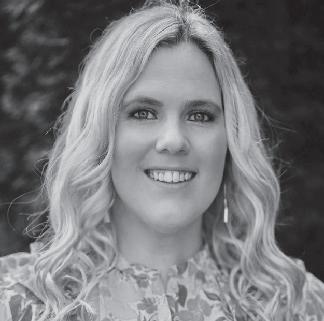


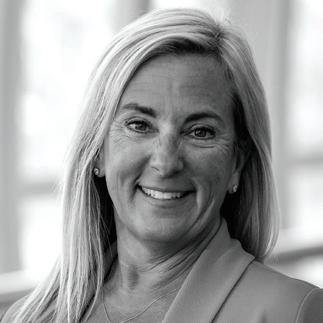
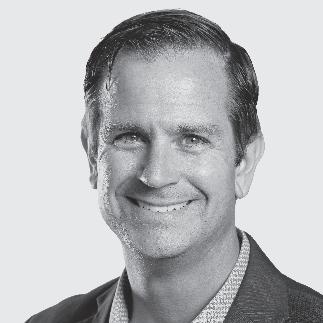




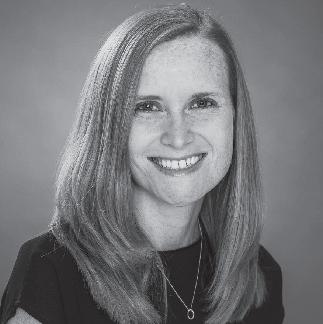
Katie Boyer-Maloy is a trained communications specialist with a willingness to go above and beyond for her clients. Boyer-Maloy is a member of the Plan Consultant Committee.
Tom Clark is a partner at The Wagner Law Group, a certified woman owned law firm specializing in ERISA & Employee Benefits.
Theresa Conti, QKA, APR, ERPA, CBFA has been involved in the retirement plan industry for more than 35 years, she started her firm Sunwest Pensions in 1998 and sold it to July Business Services in 2023.
Shannon M. Edwards, ERPA, QPA, QKC, QKA, is the President of TriStar Pension Consulting. She is a member of the ASPPA Leadership Council and the Plan Consultant Committee.
Brian Furgala is the Senior Director, Retirement Services Strategy at PenCheck’s Trust. Furgala’s primary role at PenChecks consists of leading the company’s strategic direction by identifying business opportunities and working with product management, marketing, sales and executive leadership to implement the opportunities that best align with PenChecks’ long-term objectives.
Amy Garman , QKA® is the TPA Internal Retirement Plan Counselor at Capital Group.
Emily A. Halbach-Sharp, QKC, QKA, APA, AKS, is the Director of Defined Contribution Services at Martin, Martin, Randall and Assoc., Inc. She is also a member of the ARA Women’s Council, Plan Consultant Committee and the WiRC Conference Committee.
Olivia Schwartz , BBA, QKC, QKA, is the Co-owner of Peak Retirement Group. She has been in the retirement industry her entire career starting on the recordkeeping side and eventually becoming a TPA owner. She serves on the Plan Consultant Committee and is also a mentor for the ARA Thrive mentoring program.
Drew Tirney is National Sales Manager at 401kInABox. Tirney is responsible for new and existing relationships with Financial Advisors, CPAs, Recordkeepers, Wholesalers, and TPAs. Tirney looks to revolutionize the TPA industry through technology, expertise, and partnerships.
Bonnie Treichel is the Chief Solutions Officer of Endeavor Retirement, a consulting firm dedicated to solving problems for plan sponsors, advisors, and service providers in the retirement plan industry.
Plan Consultant is Published by
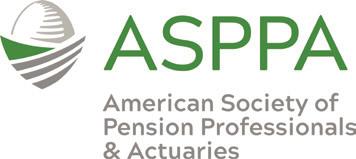
EDITOR IN CHIEF
Brian H. Graff, Esq., APM
PLAN CONSULTANT COMMITTEE
Mary Patch, QKA, CPFA, Co-chair; David J. Witz, Co-chair; Lee Bachu; R.L. “Dick” Billings, CPC, ERPA; Gary D. Blachman; Katie Boyer-Maloy; Jason D. Brown; Linda Chadbourne, QKA; Theresa Conti; Megan Crawford; Sara DeFilippo, E.A.; Shannon Edwards, ERPA; John A. Feldt, CPC, QPA; Emily Halbach; Travis Jack; Chad Johansen; Jim Racine; Olivia Schwartz; Rickie Taylor
EDITOR
Joey Santos-Jones jsantos-jones@usaretirement.org
SENIOR WRITERS
Ted Godbout, John Iekel
ADVERTISING SALES
Tashawna Rodwell trodwell@usaretirement.org
TECHNICAL REVIEW BOARD
Rose Bethel-Chacko, CPC, QPA, QKA; Marianna Christofil; Michael CohenGreenberg ; Sheri Fitts; Drew Forgrave, MSPA; Grant Halvorsen, CPC, QPA, QKA; Jennifer Lancelot, CPC, QPA, QKA; Robert Richter, APM
COVER
Jozef Micic / Shutterstock.com
2025 ASPPA OFFICERS
PRESIDENT
JJ McKinney IV, CPC, QPA, QKA
PRESIDENT-ELECT
Shannon M. Edwards, ERPA, QPA, QKC, QKA
VICE PRESIDENT
Manny Marques, CPC. QPA, QPFC, AIF®
IMMEDIATE PAST PRESIDENT
Amanda Iverson, APM
Plan Consultant is published quarterly by the American Society of Pension Professionals & Actuaries, 4401 N. Fairfax Dr., Ste 600, Arlington, VA 22203. For subscription information, advertising, and customer service contact ASPPA at the address above or 800.308.6714, customerservice@USAretirement.org. Copyright 2025. All rights reserved. This magazine may not be reproduced in whole or in part without written permission of the publisher. Opinions expressed in signed articles are those of the authors and do not necessarily reflect the official policy of ASPPA.
BOYER-MALOY
GARMAN HALBACH-SHARP
CLARK CONTI
SCHWARTZ
EDWARDS
TIRNEY
FURGALA
TREICHEL

T PENSION ASSURANCE, auditing employee benefit plans is all we do, which enables us to do them exceptionally well.
In fact, we’ve gotten so good at them, our clients regularly confess their audits are practically pain‑free.
We call this deep knowledge approach “the power of focus.” Your plan sponsors will call it “exactly what we needed!”
Contact us today and discover for yourself just how great your next EBP audit can be.
900 + AUDITS
510K +
SENATE PASSES SOCIAL SECURITY FAIRNESS ACT, REPEALING WEP AND GPO

The Senate approved a bill to repeal provisions that reduce Social Security benefits for certain public service workers, sending it to President Biden for final approval. By Joey
The Senate has passed the Social Security Fairness Act with a vote of 76-20, advancing the bill to President Joe Biden’s desk for signature. The legislation, previously approved by the House in November, repeals the Windfall Elimination Provision (WEP) and the Government Pension Offset (GPO). These provisions have long been criticized for reducing Social Security benefits for specific groups of retirees and their spouses.
The WEP and GPO adjust Social Security benefits for individuals receiving pensions from public-sector jobs not covered by Social Security tax withholding. The WEP lowers benefits for retirees, while the GPO reduces spousal or survivor benefits if the individual has a government pension. These measures were enacted in 1977 and 1983 to manage Social Security costs but have faced opposition from those who believe they unfairly target public-sector workers.
The repeal is set to apply to monthly insurance benefits under Title II of the Social Security Act for months beginning after December 2023. If signed into law, beneficiaries will see changes reflected in their payments starting in 2024.
The WEP and GPO have affected millions of retirees. A November report from the Congressional Research Service stated that as of December 2023, about 2.5 million Social Security beneficiaries, or nearly 4 percent of all recipients, had their benefits reduced by these provisions.
For example, the WEP decreases the portion of average indexed monthly earnings replaced by Social Security benefits. In 2024, this adjustment reduces benefits on the first
Santos-Jones
$1,174 of average monthly earnings from 90% to as low as 40%, cutting payments from $1,056 to as little as $469 per month. The maximum reduction is $587 before other adjustments, significantly impacting retirees who rely on these payments.
The repeal of the WEP and GPO is projected to cost $195.7 billion over ten years, according to the Congressional Budget Office. This additional expense will accelerate the depletion of Social Security funds, moving the estimated insolvency date from 2033 up by six months.
The bill’s passage came amid other pressing legislative priorities. At one point, there were concerns that the Senate might delay voting on the Social Security Fairness Act to address a continuing resolution needed to keep the government open. However, Congress approved both the continuing resolution, extending government funding until March 14, and the Social Security Fairness Act, ensuring both measures were addressed.
The legislation has received strong support from public service organizations and unions. The American Federation of State, County, and Municipal Employees (AFSCME) has advocated for the repeal of the WEP and GPO for years. AFSCME President Lee Saunders said:
“This victory for public service workers is the result of continuous advocacy. For years, AFSCME members have highlighted how GPO-WEP denied some public service workers their Social Security benefits simply for choosing careers in service to others. Thanks to Senator Sherrod Brown, who has championed GPO-WEP repeal for over a decade, and the efforts of union members, over two million public service workers will now access the Social Security benefits they earned. Many will finally enjoy retirement after a lifetime of service. We urge President Biden to sign the bill without delay.”
The bill now awaits President Biden’s approval. The President has previously expressed support for changes to Social Security policies that address inequities affecting public-sector workers. If signed, the repeal will mark a significant change in the way Social Security benefits are calculated for millions of retirees.
The Social Security Fairness Act addresses longstanding complaints about the WEP and GPO, which many believe unfairly penalize public-sector employees. While the financial implications for Social Security’s solvency remain a concern, the repeal aims to provide relief to those who have been disproportionately affected by these provisions. Lawmakers and advocates view this legislation as a response to years of calls for reform.

Editor

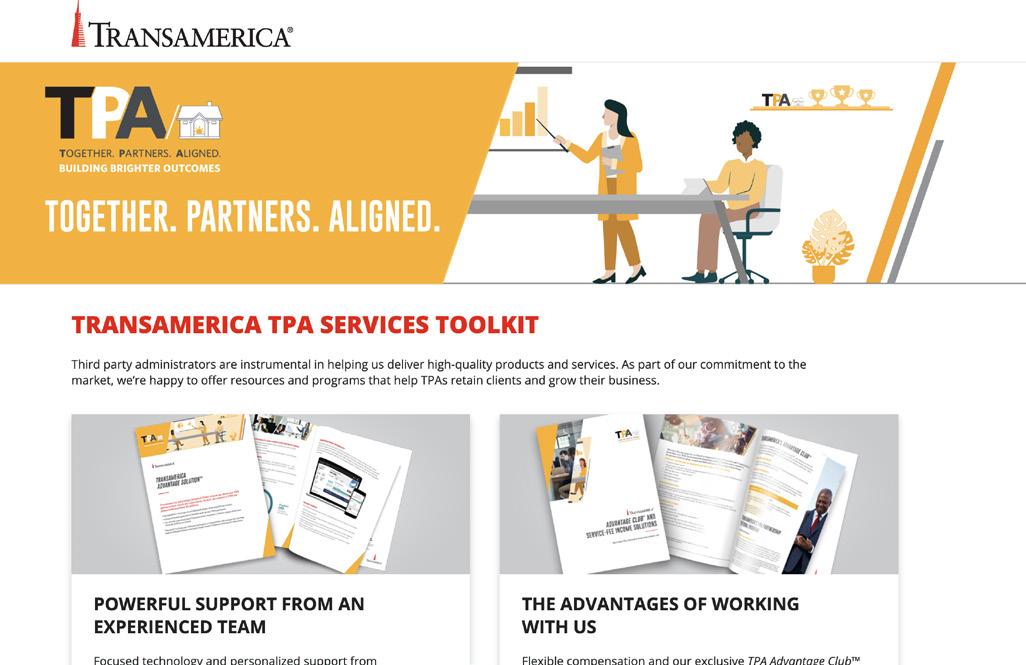

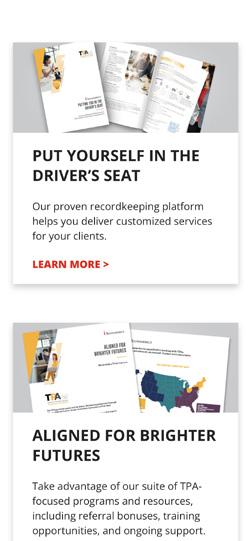


REFLECTIONS OF A GOOD ROAD TRIP
Looking to 2025, we’re going to want to keep the foot on the gas for ASPPA. By JJ McKinney
A great road trip isn’t complete without a few bumps in the road and a 3 a.m. cup of truck-stop coffee. This hurricane season alone brought its own challenges and got me thinking about the last time we tried taking the Annual Conference on the road—to Chicago. Remember that little event called the global pandemic?
But a good road trip is always a good time to reflect. As I reflect on the past couple of years serving as an ASPPA officer under the leadership of Justin Bonestroo as president, followed by Amanda Iverson, I feel grateful and optimistic about continuing the growth and enhancement of such a meaningful organization—one that enriches both our professional and personal lives.
Depending on the source, we can expect to add roughly 300,000 to 500,000 new employer-sponsored retirement plans over the next few years—a staggering 40% to 60% increase! This news elates and excites me for several reasons.
First, ASPPA has made significant upgrades to its education and credentialing programs and introduced new ones, such as the Qualified 401(k) Specialist (QKS) and Cash Balance Specialist (CBS). These programs are designed for professionals working directly with plan sponsors, positioning us to prepare the next generation of pension professionals.
“DEPENDING ON THE SOURCE, WE CAN EXPECT TO ADD ROUGHLY 300,000 TO 500,000 NEW EMPLOYER-SPONSORED RETIREMENT PLANS OVER THE NEXT FEW YEARS.”
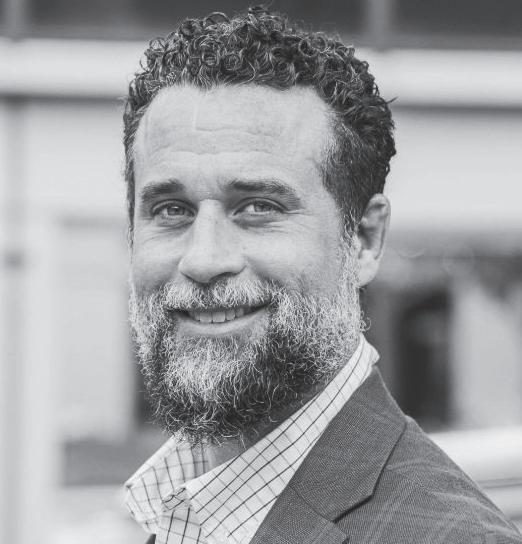
is relatively small compared to other professions competing for attention.
Let us remain diligent and intentional in representing our profession for the benefit of the hundreds of thousands of plans building futures for tens of millions of participants. As we continue implementing SECURE 1.0 and 2.0 provisions while navigating ongoing regulatory guidance and potential legislative changes, our collective work remains as vital as ever.
Blaise Pascal surely had our industry in mind when he wrote,
Second, innovation thrives on need. Imagine the possibilities artificial intelligence can bring to our work—streamlining complexities in mergers and acquisitions, compensation consulting, and navigating the intricacies of affiliated service groups.
Finally, more plans mean reaching communities that have so far missed the rising tide of 401(k) benefits. Whether we grow our diverse influence before or after these plans emerge, we have a unique opportunity to make a meaningful impact.
That said, we face a few headwinds as this abundance of plans marches toward us. Tax reform, paired with debt reduction efforts, often invites the retirement industry to the proverbial fundraising party. While we’ve been fortunate to avoid significant blows in recent years—unlike the cuts of over 70% imposed by TRA ’86—the growing baskets of retirement assets remain tempting targets. As Jeffrey Acheson so eloquently stated in his ARA presidential speech, “The tax beast is hungry.”
ASPPA’s superpower lies in delivering a message that even the busiest lawmakers can carry to the floor for discussion. However, we are not the only voice, and ours
“The struggle alone pleases us, not the victory,” in his classic Pensées. With the braid of new legislation, guidance, and implementation wrapping around us, we may feel like the Maypole itself—tangled in the process without fully enjoying the dance.
I am honored and humbled to serve as the 2025 ASPPA president and look forward to working with many of you over the next year. Cheers!
P.S. Message me on LinkedIn with your ideas for attracting professionals to our industry earlier in their career searches. PC
What could you use more of? Time and money.
Avail more time and money to invest in your current employees with Inspira’s industry leading automatic rollover IRA solution. Here’s what an automatic rollover IRA program can do for you:
Help reduce retirement plan costs
Lessen your administrative burden
Help decrease your fiduciary risk
Empower your former employees to take control of their retirement journey.
Scan the QR code to discover the value of automatic rollover IRAs:

Learn more about Inspira’s retirement services at inspirafinancial.com/business.
Inspira Financial Trust, LLC and its affiliates perform the duties of a directed custodian and/or an administrator of consumer-directed benefits and, as such, do not provide due diligence to third parties on prospective investments, platforms, sponsors, or service providers and do not offer or sell investments or provide investment, tax, or legal advice.
Inspira Financial and Inspira are trademarks of Inspira Financial Trust, LLC. RWB-166 (10/24) | © 2024 Inspira Financial Trust, LLC. All rights reserved.
WELCOME
NEW & RECENTLY CREDENTIALED MEMBERS!
MSEA
Christina Yeager
QPA™
Nathan Deege
Aaron Lundy
QKC®
Chris Becker
Sandra Eberly
Andrew Golden
Aaron Lundy
Olivia Schwartz
Frances Sonara
Katrina Taylor
Zachary Telford
Kevin Wallace
QKA®
Kelly Abel
Juanita Allen
Susan Aspengren
Robert Baer
Denise Banko
Alicia Barragan
Edward Bronkhorst
Nicholas Carano
Ty Carpenter
Brittany Chandler
Katherine Cook
Allison Coomes
Jonathan Cruz
Michele Dalbero
Amity Dimock
Jackie Disbrow
Kevin Drea
Sarah Drobny
Ashley Dumont
Bradley Eckhoff
Walak Elliott
Oriol Forcada Viladomiu
Earl Fridley
Bryan Gold
Andrew Golden
Karen Goodnight
Joseph Hadaway
Ann-Marie Hamann
Mackenzie Hancock
Keashia Holtzman-Kishlock
Rita Kennedy
Christine Lanning
Michelle Laplant
Kyle Liggans
Aaron Lundy
Karen McCulley
Teresa McDonald
Patricia McHugh
Jenny Meronk
Mary Miller
Renee Mrosowski
Michael Nasca
Patrick Nichols
Angela Orlando
Martha Perkins
Joseph Phaneuf
Kortney Pulliam
Christopher Rippel
Kristina Robson
Elizabeth Rogers
Reagan Rosalez
Josh Scheirer
Jim Schiltz
Ashley Seaberg
Abigail Stewart
Raymond Tilotta
Jaden Urdiales
Adam Van Newenhizen
Yevgeny Venetsky
Yixin Wang
Madeleine Wille
Amanda Woller
Christopher Woodard
Nick Xinopoulos
Teresa Yates
Yan Zhao
Sheng Zheng

LET’S SUPPORT THOSE WHO SUPPORT US
One of the most important employee benefits is a strong and robust retirement plan, and we will continue to work with lawmakers on Capitol Hill to lift the prohibition on CITs in 403(b)s. By Brian
A bit of disappointing news about NAPA’s ongoing effort to ensure retirement plan investment parity.
We’re working hard to make collective investment trusts (CITs) available to nurses, educators, and other nonprofit workers in their employer-sponsored 403(b) retirement plans, most notably with our advocacy and support for Senate and House bills that address the issue.
The bills provide parity between 401(k) and 403(b) plans by allowing 403(b) plan participants to choose from a wider array of funds, including CITs that often have lower fees.
We’d hoped the legislation would pass by year’s end. Unfortunately, time ran out, but we remain committed to the fight in 2025.
At issue is the fact that many types of retirement plans (e.g., 401(k)s, 457(b)s, and TSPs) are permitted to invest in CITs, while 403(b)s cannot.
Because of how they are regulated—by the Office of the Comptroller of the Currency (OCC) rather than the Securities and Exchange Commission—CITs typically have lower administration, marketing, and distribution costs than mutual funds. This often results in significant cost savings for plan sponsors and participants.
According to Retirement Plan Advisory Group (RPAG) research, CIT fees are as much as 53% lower than mutual fund fees, which can help maximize returns for retirement plan participants.
“FEAR OVER HOPE MAY GENERATE HEADLINES AND INCREASE CLICKS TO HELP MARKET SOLUTIONS, BUT IT’S A FAUSTIAN BARGAIN DESTINED TO BITE US.”
The 403(b)/CIT issue is part of the unfinished business left over from the enactment of the SECURE 2.0 Act of 2022, which sought to allow their use, but there was disagreement in the House Financial Services Committee over the securities aspect of the intended provision.
Consequently, the final version of SECURE 2.0 included tax language addressing relevant sections of the Internal Revenue Code, but language concerning changes relevant to financial services was stripped out.
The title of my column is the tagline for a recently-launched ARA advocacy page dedicated to the issue, which I encourage you to visit.
It contains Frequently Asked Questions (FAQ), background on the issue, and— importantly—calls to action for retirement plan professionals, participants, and sponsors to make their voices heard by lawmakers.
Several form letters are available on the website for nonprofit employees, supporters of nonprofit employees, educators, and healthcare workers to help push
By simply providing their name and address, users are presented with the most appropriate letter with their senators’ and congressional representatives’ email
H. Graff

addresses and text prefilled.
For retirement plan professionals and sponsors specifically, the “supporters of nonprofit employees” letter allows them to contact their Representatives as “concerned citizens and strong supporters of our educators, nonprofit workers, hospital employees, and all those who dedicate their lives to caring for members of our society.”
They can also forward links to other letters to involve the plan sponsors and participants they serve in the effort to increase access to what are often lower-cost investment products that aid in the retirement savings of the estimated 14.5 million American workers in the nonprofit sector.
One of the most important employee benefits is a strong and robust retirement plan, and we will continue to work with lawmakers on Capitol Hill to lift the prohibition on 403(b) plan sponsors from including CITs in their menu of investment options.
Given that it passed the House overwhelmingly—and the Senate version garnered so many cosponsors in such a short period of time—the prospects of getting this bill signed into law in the next Congress are strong. As always, we’ll keep you posted. PC
Brian H. Graff, Esq., APM, is the Executive Director of ASPPA and the CEO of the American Retirement Association.

14|COMPLIANCE&ADMINISTRATION
USE THE FORCE: LEVERAGING FORCE-OUT DISTRIBUTIONS AFTER SECURE 2.0 CHANGES
May the force be with you – in removing small balances from retirement plans. By Brian Furgala
Managing small balances is expected to become more common in the coming years. SECURE 2.0 changes, such as mandatory automatic enrollment provisions and long-term, part-time (LTPT) employee requirements, will likely increase small account balances. Combined with an average employment length of about five years, this trend suggests an increase in terminated employees with small balances.
SECURE 2.0 also raised the threshold for force-out distributions, allowing plans to process distributions of small balances for terminated employees. Plans that use force-out distributions and automatic rollover IRAs efficiently can reduce costs and ease operational burdens.
BENEFITS OF USING FORCE-OUT DISTRIBUTIONS
The ability to remove terminated employees with small account balances lowers plan-related costs and streamlines operations. Using force-out distributions can:
• Lower service provider fees. Plans may achieve better pricing by increasing average account balances and reducing fees based on headcount or assets.
• Reduce the likelihood of a Form 5500 audit. Auto-enrollment and LTPT employee requirements
will likely increase the number of accounts. Plans exceeding 100 accounts generally require an annual audit, costing $7,000 to $15,000. Removing small balances can help avoid this threshold.
• Minimize operational errors. More accounts increase the chances of errors or operational failures. Removing small balances reduces these risks, saving time and money.
INCREASED THRESHOLD AND EFFECTIVE DATE
The benefits of force-out distributions multiply with SECURE 2.0’s increased threshold. The smallbalance limit rose from $5,000 to $7,000, effective for distributions after Dec. 31, 2023. This allows plans to remove balances of up to $7,000 for employees who terminated years ago, saving money and improving efficiency.
For example, Genelle left her job in 2020 with a balance of $5,800, which exceeded the previous threshold. By 2024, her balance is $6,500, making her eligible for a force-out distribution under the new limit. The plan administrator should notify her that the balance will be distributed unless she makes an election. If she doesn’t respond, her account transfers to an automatic rollover IRA.
AMENDMENT TIMING
The new $7,000 threshold can be implemented immediately, without waiting for a plan document amendment. Plans have until Dec. 31, 2026, to formally amend their documents under SECURE 2.0. If a plan previously didn’t allow force-out distributions or used a lower threshold, it may still operate under the new limit before amending the document. Although the conservative approach is to amend first, past IRS practices support using the new threshold with a later amendment deadline.
USING AUTO ROLLOVER IRAS FOR BALANCES OF $1,000 OR LESS
While implementing the $7,000 limit, consider using auto rollover IRAs for all force-out distributions, including balances of $1,000 or less. Participants often leave small balances unclaimed, creating fiduciary risks and tax consequences. Auto rollover IRAs eliminate these issues by transferring responsibility to the IRA provider and avoiding taxable income or penalties for participants. Uncashed checks remain plan assets protected under ERISA, requiring fiduciary duties such as participant notices, Form 5500 reporting, and earnings allocations. Auto rollover IRAs remove these obligations.
15|COMPLIANCE&ADMINISTRATION

“IF A PLAN PREVIOUSLY DIDN’T ALLOW FORCE-OUT DISTRIBUTIONS OR USED A LOWER THRESHOLD, IT MAY STILL OPERATE UNDER THE NEW LIMIT BEFORE AMENDING THE DOCUMENT. ALTHOUGH THE CONSERVATIVE APPROACH IS TO AMEND FIRST, PAST IRS PRACTICES SUPPORT USING THE NEW THRESHOLD WITH A LATER AMENDMENT DEADLINE.”
Moreover, the Department of Labor (DOL) requires regular searches for missing participants, a burden avoided by using auto rollover IRAs. Participants also benefit. For example, Adriana, age 25, misses the deadline to respond to a $800 distribution notice. If she receives a check, the amount becomes taxable income, and she may incur a 10% early withdrawal penalty. With an
auto rollover IRA, her funds remain tax-deferred, and she controls when to withdraw.
THESE AREN’T THE SMALL BALANCES YOU’RE LOOKING FOR Force-out distributions help control plan expenses and streamline administration. With SECURE 2.0 adding more small balances, it’s crucial to use the $7,000 threshold.
While the limit doesn’t adjust for inflation, employers should act regularly to maximize its benefits. Using automatic rollover IRAs for all force-out distributions – from $1 to $7,000 – eliminates fiduciary risks and prevents unwanted tax and penalty issues for participants. Together, these tools help employers and participants live long and prosper. Wait, wrong franchise! PC
A RECORDKEEPER PERSPECTIVE ON RETIREMENT LEGISLATION AND DELAYS
While this isn’t necessarily a new phenomenon, in recent years with the passing of SECURE 2.0, the painful reminder of government delays issuing guidance on upcoming retirement laws brings to light the uncertainty in interpreting and implementing those regulations that we all face.
By Katie Boyer-Maloy & Heather Windjue
As recordkeepers, we are approached early and often with the same questions from our partners and participants: “Who? What? When? Where? And how much money is this going to cost?”
So, what happens, and what can we do about it? Let’s talk about the challenges we face when waiting for guidance around new legislation.
COLLABORATION—INTERNAL AND EXTERNAL
SECURE 2.0 changes the way catch-up contributions are deferred for higher-wage earners. Before the ink was dry on the draft of this article, we received word this piece of legislation was delayed, but for our example, let’s look at the catch-up contribution changes.
Recordkeepers, TPAs, and payroll companies are wrestling with how best to ensure those deferrals that need to be Roth are, in fact, contributed as Roth. Should the wages be immediately contributed as Roth, where possible, or corrected later? Who is in the best position to ensure the individual has the best experience? The plan sponsor and the participant also have voices in determining the best outcome.
In other words, there are many stakeholders when considering how to address a required change.
This is where it becomes critical to collaborate to help create an optimal end-to-end experience. It’s important that we all offer input and lean into conversations with peers. For TPAs and recordkeepers, it’s crucial to talk to clients about the customer experience journey. When asked for feedback, be thoughtful and collaborative.
Collaboration among the entities involved takes a tremendous amount of time and coordination. Part of that time is spent setting a foundation of what we understand the requirements and objectives to be, which can be an ever-changing marker. This is just a small example of the level of collaboration that takes place among industry partners to help ensure we meet our customers’ needs.
UNDERSTANDING EXPECTED ADOPTION AND PRIORITIZATION
We’ve heard it said a million different ways, but we all know the only way to eat an elephant is one bite at a time. Much like that concept, expecting to wrap it all up with a bow overnight is simply not feasible. Not all legislative provisions are mandatory, and as recordkeepers, we have finite project and IT resources. Understanding what provisions are most important to our customers— our advisors, plan sponsors, TPAs, and participants—allows us to prioritize
development work appropriately to meet customer needs in a timely manner.
CLEAR
AND CONCISE COMMUNICATION TO ALL
PARTIES
Our clients seek expertise and strategic counsel from us. They look to us for insights and knowledge they otherwise wouldn’t have. This could come in the form of viewpoints, white papers, newsletters, social media, webcasts, or everyday conversations. They value clear, concise communication regarding instructions, decisions to be made, and actions to be taken.
We focus on keeping our clients informed and up to date, letting them know what is happening—even when it feels clunky, confusing, or timeconsuming—despite the best-laid communication plans.
Review your communication plan from beginning to end and know how often you will communicate, including what is known and unknown. Anticipate delays and a lack of clarity in guidance, and set expectations early with your clients. Let them know that while not all information has been clarified, you are on top of it and will communicate updates as they become available. Help them understand what is known and unknown and how it impacts the decision-making process.
17|REGULATORYISSUES

“WHILE CHALLENGES WILL CONTINUE TO ARISE AS REGULATIONS EVOLVE, THE MOST IMPORTANT THING TO REMEMBER IS THAT THE ONE CONSTANT IN OUR INDUSTRY IS CHANGE.”
MANAGING COMPLIANCE RISKS
Recordkeeping systems are built and maintained to ensure compliance with all appropriate regulations. Recordkeepers have dedicated personnel responsible for ensuring systems remain compliant and are constantly monitored and revised, along with developing procedures for staff to follow. This adds a new layer of complexity, requiring verification that new regulations do not nullify pre-existing software safeguards or intentions. The process is widespread
and touches nearly every system and process within our infrastructure.
THE QUESTION ISN’T IF THERE WILL BE MORE CHANGE, BUT WHEN
Just when the plan is set and it feels like the ball is rolling toward the end goal, we get thrown yet another curveball with Internal Revenue Service delays on adopting regulations.
Leaning in, having a technology strategy, and being communicative and collaborative with industry partners
can help ensure we all navigate to the best outcome. While challenges will continue to arise as regulations evolve, the most important thing to remember is that the one constant in our industry is change. While change brings challenges, especially at the rate we’re experiencing now, it also presents opportunities. As an industry, we must take advantage of these chances to partner together, show resilience, and navigate the changes we face head-on as a team, working toward the best results for our clients. PC

GENERATIVE AI IN THE ACTUARIAL WORKPLACE
Generative AI is changing the game for actuaries, offering new ways to work smarter while raising important questions about its risks and responsibilities. By Evan Thomas & Ellen L. Kleinstuber
Generative AI, large language models (LLMs), and ChatGPT have become significant buzzwords in recent years. These models offer powerful tools for optimizing personal and professional tasks, from simplifying daily routines to enhancing analytical processes. The benefits of this technology are undeniable, but understanding its risks and limitations is crucial, especially in professional settings. Here’s what actuaries need to know moving forward.
ACTUARIAL AND BUSINESS APPLICATIONS OF GENERATIVE AI
Generative AI models, including the widely recognized ChatGPT, have gained attention for their ability to generate content based on user inputs. Their versatility spans personal uses, such as creating vacation itineraries or meal plans, and professional applications like streamlining research, automating data analysis, and assisting decision-making. This technology has captured corporate interest while drawing regulatory scrutiny.
“GENERATIVE AI SHOULD SERVE AS A TOOL TO ENHANCE EFFICIENCY, NOT AS A SUBSTITUTE FOR ACTUARIAL EXPERTISE. BY STREAMLINING TECHNICAL TASKS, IT ALLOWS ACTUARIES TO FOCUS ON CONSULTING AND IMPROVING COMMUNICATION WITH CLIENTS.”
In March 2024, the European Parliament approved the EU Artificial Intelligence Act, and the White House issued AI guidance mandating federal agencies implement safeguards by December 2024. These developments underscore the growing emphasis on responsible AI integration across industries. For actuaries, Generative AI presents opportunities to enhance efficiency. Beyond general applications like research and summarization, it can address industry-specific needs, such as verifying regulatory compliance and identifying risks. One standout feature is its ability to generate code. For instance, actuaries can prompt ChatGPT to create Excel-compatible code for calculating durations, allowing for customizations such as specifying Macaulay, effective, or modified durations. While Excel provides standard functions, Generative AI can draft unique tools for tasks like projecting pension plan contributions or credit balances, saving valuable time.
UNDERSTANDING AND MANAGING MODEL RISK
Despite its potential, using Generative AI in actuarial work demands caution. A primary concern is the generation of inconsistent or inaccurate output. These models operate by predicting the next words in a conversation based on input, rather than retrieving factual answers from reliable sources. Although they may reflect insights from trained data, their lack of understanding poses risks in accuracy-dependent contexts, such as benefit calculations.
Since identical prompts can yield different results, actuaries must carefully assess outputs for reliability, particularly in situations where precision is critical.
ACTUARIAL PROFESSIONALISM CONSIDERATIONS
Credentialed actuaries must adhere to professional standards, including the Code of Professional Conduct and Actuarial Standards of Practice (ASOPs). Issues like model bias (ASOP 56), data security (Precept 9, ASOP 23), and clear communication (ASOP 41) are pivotal when incorporating LLMs into actuarial work.
Best practices include aligning AI applications with professional standards, evaluating potential biases in training data, inputting high-quality data, and thoroughly vetting results for relevance and accuracy. The American Academy of Actuaries emphasizes these principles in its September 2024 publication, Actuarial Professionalism Considerations for Generative AI, offering guidance for addressing emerging professionalism challenges.
Generative AI should serve as a tool to enhance efficiency, not as a substitute for actuarial expertise. By streamlining technical tasks, it allows actuaries to focus on consulting and improving communication with clients. For example, LLMs can simplify actuarial jargon for lay audiences, fostering clearer communication.
This technology could also shift traditional business models, moving from time-based billing to value-based pricing, while raising questions about intellectual property ownership for AI-generated outputs.
IN SUMMARY
Integrating Generative AI into the actuarial profession promises greater efficiency and capability but also demands adherence to ethical and professional standards. Actuaries must balance innovation with responsibility by adopting best practices, including:
• Assessing whether AI is appropriate for specific tasks,
• Safeguarding confidential data,
• Understanding potential model biases,
• Evaluating the model’s limitations and user expertise,
• Implementing robust quality control,
• Disclosing AI use in communications, and
• Developing company policies for acceptable AI use.
By embracing these practices, actuaries can harness the power of Generative AI while upholding the profession’s standards and advancing their work. PC
SYNC OR SWIM: NAVIGATING PLAN SPONSOR PROCESSES WITH SERVICE PROVIDERS
Ever wonder how plan sponsors and service providers work together smoothly? Explore how they align their processes, tackle challenges, and keep everything running like clockwork. By Olivia Schwartz
Managing a 401(k) plan is a significant responsibility for plan sponsors, involving fiduciary oversight, regulatory compliance, and the delivery of reliable retirement benefits to employees. To navigate this complex landscape, plan sponsors often rely on service providers, such as investment companies and third-party administrators (TPAs). However, ensuring these partnerships function effectively and compliantly requires more than selecting capable providers— it demands well-documented processes and procedures.
Documenting processes and procedures provides a structured framework for plan operations, enabling clear communication, accountability, and coordination between sponsors and service providers. This article explores the importance of such documentation and its intersection with investment companies and TPAs.
THE IMPORTANCE OF DOCUMENTED PROCESSES AND PROCEDURES
1. Fulfilling Fiduciary Responsibilities
Under the Employee Retirement Income Security Act of 1974 (ERISA), plan sponsors are fiduciaries required to act solely in the interest of plan participants and beneficiaries. Documented processes ensure fiduciary duties—such as prudently selecting and monitoring service providers, managing fees, and maintaining compliance—are consistently executed.
2. Mitigating Risks
The involvement of multiple service providers increases the potential for miscommunication, errors, and operational inefficiencies. Documented procedures minimize these risks by providing clear guidelines for tasks such as:
• Processing contributions
• Managing participant loans and distributions
• Conducting compliance testing
3. Improving Coordination with Providers
Investment companies manage the plan’s investment options, while TPAs handle compliance and administrative tasks. Their roles often overlap. Clear documentation delineates responsibilities, ensuring each provider understands its scope of work and how it interacts with others.
4. Supporting Audit Readiness
Regulators and auditors frequently request evidence of consistent plan administration. Documented processes serve as records of the sponsor’s diligence and provide transparency into how the plan operates.
KEY AREAS WHERE DOCUMENTATION INTERSECTS WITH SERVICE PROVIDERS
1. Selection and Onboarding of Service Providers
A documented process for selecting and onboarding providers ensures decisions are made prudently and transparently. For example:
• Investment Companies: Sponsors should outline criteria for evaluating fund performance, fees, and alignment with participant needs.
• TPAs: Criteria should include expertise in compliance testing, plan document preparation, and administrative support.
Documentation should also include an onboarding checklist to integrate the provider effectively. Many service providers have their own checklists, which sponsors can incorporate into their processes.

2. Role Clarification and Communication Protocols
Sponsors must clearly define roles to avoid duplication or gaps when working with investment companies and TPAs. For instance:
• Investment companies handle fund selection and performance reporting, while TPAs ensure compliance with regulations such as nondiscrimination testing and contribution limits.
• Documented communication protocols establish how and when providers exchange information, such as fund performance reports or compliance test results.
3. Monitoring and Performance Reviews
ERISA requires plan sponsors to regularly monitor their service providers. A documented monitoring process might include:
• For Investment Companies: Periodic evaluation of investment performance against benchmarks and peer groups.
• For TPAs: Assessment of compliance accuracy, responsiveness, and adherence to deadlines. Sponsors should document review schedules, criteria for evaluating performance, and actions to take if performance is unsatisfactory.

“MANAGING A 401(K) PLAN REQUIRES BALANCING NUMEROUS RESPONSIBILITIES WHILE COORDINATING PARTNERSHIPS WITH INVESTMENT COMPANIES AND TPAS. DOCUMENTED PROCESSES AND PROCEDURES ARE ESSENTIAL TOOLS FOR ENSURING THESE RELATIONSHIPS ARE EFFICIENT, COMPLIANT, AND EFFECTIVE.”
4. Compliance Oversight
Compliance is a shared responsibility between plan sponsors and service providers, though ultimate accountability lies with the sponsor. Documented compliance procedures ensure:
• Required testing and filings, such as Form 5500 and nondiscrimination tests, are completed accurately and on time.
• Responsibilities for providing disclosures and fee breakdowns are clearly defined.
• Any compliance issues are addressed promptly, with clear escalation protocols.
BENEFITS OF DOCUMENTED PROCESSES FOR SPONSORS AND PROVIDERS
For Plan Sponsors:
• Consistency: Ensures plan operations are executed uniformly, regardless of personnel changes.
• Accountability: Clearly outlines responsibilities for each task.
• Protection: Provides evidence of diligent plan management during audits or legal challenges.
For Service Providers:
• Clarity: Reduces confusion about expectations, deadlines, and responsibilities.
• Efficiency: Streamlines workflows by integrating provider operations into the sponsor’s documented procedures.
• Partnership: Enhances collaboration through transparency and mutual understanding.
PRACTICAL STEPS FOR DOCUMENTING PROCESSES
1. Identify Key Processes
Break down tasks such as contribution processing, investment monitoring, compliance testing, and participant communications.
2. Involve Service Providers
Work with investment companies and TPAs to align documentation with their workflows and reporting capabilities.
3. Standardize Documentation
Use templates and checklists to create consistent, repeatable processes.
4. Review and Update Regularly
Schedule periodic reviews to ensure procedures remain current with regulatory changes and provider capabilities.
5. Train Internal Teams
Educate staff on documented procedures to ensure adherence and understanding.
CONCLUSION
Managing a 401(k) plan requires balancing numerous responsibilities while coordinating partnerships with investment companies and TPAs. Documented processes and procedures are essential tools for ensuring these relationships are efficient, compliant, and effective. By creating clear guidelines for tasks such as provider selection, communication, monitoring, and compliance oversight, sponsors can foster stronger partnerships, reduce risks, and fulfill their fiduciary duties.
In the end, well-documented processes not only protect the plan sponsor but also enhance outcomes for plan participants, supporting their long-term financial security. PC
T. Rowe Price Retirement Plan Services
The T. Rowe Price Difference
We continually invest in the growth of our retirement plan business by visioning and building better plan sponsor and participant experiences.
We use a collaborative and consultative approach with plan sponsors, financial professionals, and third-party administrators to drive better outcomes
We are one of the largest U.S. mutual fund companies, measured by assets under management, offering access to a range of investment products with flexible pricing structures
nearly Our promise to you:
Ongoing investment in innovative retirement plan solutions to drive better outcomes for plans and participants.
■ State-of-the-art recordkeeping
■ Tenured client service teams with an average of 15 years in the industry
■ Over 8,200 retirement plans and more than 2.3 million plan participants Experience 40 years
Flexibility
■ Access to a range of high-quality proprietary and nonproprietary investment products or a fully open architecture
■ Competitive pricing based on adoption of industry best practices by engaging the consultative services of a third-party administrator (TPA)
Confidence
■ #1 Net Promoter Score1
■ 97% retention rate2
■ 89% of plans sold year-to-date involve a TPA3
Consider the investment objectives, risks, and charges and expenses carefully before investing. For a prospectus or, if available, a summary prospectus containing this and other information, call 1-800-638-4546. Read it carefully.
1Source: Chatham Partners 2023 Institutional Client Satisfaction Survey. The Chatham Partners’ Net Promoter Score (NPS) measures clients’ likelihood of recommending T. Rowe Price. Respondents are categorized as Promoters, Passives, or Detractors. The NPS is the percentage of Promoters minus the percentage of Detractors. Net Promoter, Net Promoter Score, and NPS are trademarks of Satmetrix Systems, Inc.
2Average TRAC market plan retention rate over 5 years, from 2019-2023.
3Average TRAC market plan retention rate over 5 years, from 2019-2023.
T. Rowe Price Investment Services, Inc., distributor, mutual funds.
DEALING WITH PROBLEMATIC CLIENTS: A GUIDE FOR RETIREMENT INDUSTRY SERVICE PROVIDERS
In the retirement services industry, problematic clients are more than just a nuisance—they’re a risk to your business. By
Bonnie M. Treichel & Thomas E. Clark Jr.
We both spend a lot of time working with service providers to support their operations, compliance, marketing, and profitability. One repeated question we get from those operating at the highest levels of service is this: What is the one thing I’m missing? Nearly always, the answer is to finally do something about problematic clients: Fix or fire your bottom-tier clients.
As a retirement industry service provider, you’re dedicated to helping clients meet their fiduciary responsibilities, navigate complex regulations, and ultimately secure the financial well-being of their plan participants. However, not every client relationship will be smooth. In some cases, clients may become problematic—refusing to follow instructions, being noncompliant with plan requirements, or even failing to pay their bills. Addressing these situations promptly and professionally is essential to protect your business, uphold fiduciary standards, and avoid potential liability.
This article will guide you through identifying problematic clients, understanding common client issues, implementing best practices for improving the relationship, or terminating it if necessary.
WHAT IS A PROBLEMATIC CLIENT?
You know who we are talking about—those clients you are forced to put five times as much effort into, and they are never satisfied. The ones that eat up all your margin and quickly lose profitability. You can identify those clients if they have one or many of these characteristics:
1. Refusal to Follow Advice: Clients who consistently ignore your advice or disregard compliance-related recommendations, which could put their plans at risk of fiduciary breaches or regulatory penalties.
2. Delayed or Nonpayment: Late or missed payments are not only frustrating but can also impact your firm’s cash flow.
3. Poor Communication: Clients who are difficult to reach, unresponsive, or constantly cancel or skip meetings.
4. Excessive Scope Creep: Clients who regularly push for more services than agreed upon or demand excessive revisions, risking making the engagement unmanageable.
5. Hostility or Disrespect: Dealing with clients who are hostile, disrespectful, or even abusive is never acceptable.
6. Provide Incomplete Information: Clients who fail to provide required documents or withhold crucial information can delay processes, waste time, and put the project at risk.
7. Disregard for Professional Boundaries: Clients who expect immediate responses outside of agreed-upon hours or continuously demand attention that falls outside a reasonable engagement may strain your resources and impact service delivery.
WHAT CAN I DO SHORT OF TERMINATING THE RELATIONSHIP?
When issues arise with clients, what can you do short of terminating the relationship? The first step is to try and find out more information. Ask contacts at the client organization if something might be wrong. Has someone fallen ill? Did a key employee quit? Often, problematic clients are not being difficult on purpose but have something out of their control causing distractions and problems at their workplace. Being empathetic and learning more about your clients’ problems may deepen your relationship with them, especially if you can positively contribute to a resolution.
If you’ve tried connecting with a client and they still are not responsive or are not following your professional advice, it is imperative that you document the situation for your own files and in descriptive communications to the client. For example, if you learn that a plan sponsor has failed to make necessary contributions to a plan, you can begin by addressing the issue with them to determine why the contributions haven’t happened. If their needs are beyond your skill set, you can introduce them to a third party, such as an ERISA attorney, who can discuss available correction options. If issues persist, warn the client that you will terminate the relationship if they do not address your concerns. Finally, as described further in the next section, follow through, terminate the relationship, and put that energy into finding three or four new, nonproblematic clients.
WHAT ARE BEST PRACTICES FOR TERMINATING A PROBLEMATIC CLIENT RELATIONSHIP?
Termination should be handled carefully to protect your firm legally and professionally.
1. Review the Service Agreement
Before proceeding, revisit the terms of your service agreement. Specific clauses to examine include:
• Termination Clause: Many agreements include a termination clause outlining the conditions under which either party can end the relationship. Ensure you adhere to any notice periods, grounds for termination, and procedures specified in the contract, such as adhering to specific methods for delivery of notices.
• Payment Provisions: Confirm that the client is current on all invoices. If there are outstanding fees, the agreement may allow you to withhold certain deliverables until payment is made in full.
• Disputes: Familiarize yourself with the terms for resolving disputes. Be prepared for the client to threaten to retaliate by claiming you breached the agreement first.
• Non-Disparagement and Confidentiality: These clauses can help ensure that both parties exit the relationship respectfully, maintaining confidentiality and avoiding reputational damage.
In some instances, the client may be entirely nonresponsive, and you may have to consider how to terminate a client that is unwilling or unable to respond to your termination letter. In those cases, you may need to work with legal counsel or consider other measures outside the scope of this article.
2. Document Problematic Behavior
As noted above, documentation is one of your most powerful tools. Document specifics such as:
• Instances where the client ignored advice or missed deadlines.
• Records of late payments, nonresponsiveness, or scope creep.
• Correspondence demonstrating disrespect or hostility. This documentation not only serves as a record for
legal protection but also provides a basis for a termination discussion with the client.
3. Provide Clear Written Notice
Once you’ve reviewed the contract and documented the issues, draft a clear, professional termination notice. The notice should include:
• Reason for Termination: Be concise but factual. Reference specific contract terms, such as “nonpayment,” “repeated failure to adhere to compliance recommendations,” or “scope of services exceeded.”
• Outstanding Obligations: If applicable, outline any unpaid invoices, final deliverables, or actions required to complete the relationship.
• Notice Period and Effective Date: If your contract specifies a notice period (e.g., 30 days), adhere to this timeframe. Provide a clear date for the effective termination of services.
4. Avoid Emotional Language
Although client termination can be frustrating, maintaining a neutral and professional tone is essential. Avoid emotional or accusatory language and focus on facts, particularly the terms of your service agreement and the documented behavior.
5. Prepare for a Transition
Depending on the circumstances, offering a short transition period or even referring the client to another service provider can ease the exit process and protect your reputation. Be clear about any final steps you’ll take and close out the engagement respectfully.
CONCLUSION
Even sweeter than finally fixing or firing a problematic client is preventing one from ever occurring. Consider having a robust and consistently purposeful intake process. Interview your prospects as much as they are interviewing you. Not everyone is a good fit for your business. But even with the best prevention, problematic clients are a reality in the retirement services industry. Follow the above best practices to protect yourself and your firm. PC

IT’S TIME FOR A
‘PEP’ Talk:
FOR OR AGAINST?
PEPs Continue to Dominate the Coverage.
BY NEVIN ADAMS, DALE ESSENMACHER, SHANNON EDWARDS, CHAD JOHANSEN & PETE SWISHER
A 2022 survey by the Secure Retirement Institute found
that small employers are interested in learning more about pooled employer plans, although there is still some hesitancy on the road to implementation.
That hesitancy has also applied to many third-party administrators (TPAs), who have traditionally seen these designs as competitors to the stand-alone plan consultative services they have long provided.
To explore these trends—and to consider the impact these new designs are having on closing the coverage gap, as well as the take-up rate by larger plans—we brought together a panel of experts: Dale Essenmacher, vice president and pooled plan specialist at Ascensus; Shannon Edwards, owner of TriStar Pension Consulting; Chad Johansen, partner and director of consulting with Plan Design Consultants; and Pete Swisher, managing partner at Group Plan Systems—with former ARA Chief Content Officer Nevin Adams leading the discussion.
Nevin Adams:
We know that Pooled Employer Plans—PEPs—were a muchanticipated aspect of the SECURE Act, one that was expected to play a significant role in closing the coverage gap, particularly among smaller employers. But why do you like PEPs?
Dale Essenmacher:
I think that the word efficiency probably is, first and foremost, from a lot of the parties that are attached to PEPs, building efficiency in a business that can sometimes be very inefficient, and given where margin pressures have happened over the last decade. Building efficiencies has helped drive down the cost of operating these plans,
and building those efficiencies has made adopting a plan a little more palatable for certain-size plans. It really gives smaller employers the ability to have access to things that you might not have access to versus a larger employer—be it a different website, technology, tools, or resources—or an investment lineup that has institutionalclass shares that aren’t available to a small plan. But because they’re joining a large pooled plan, they now have access to things of that sort.
Pete Swisher:
I’ll give you a simple one. It’s a superior plan design for most employers.
Nevin Adams: In what ways?
Pete Swisher:
You do this for different reasons, but there’s a fundamental premise at work here that I just believe in—that employers don’t want to be in the middle of our stuff, and they prefer that we be in the middle of it. So, a system premised on an employer saying, I’ll take on these legal roles that I don’t understand and accept these hundreds of duties that I’m not aware of… It just isn’t the right one for most employers.
Nevin Adams: So, what’s wrong with PEPs?
Shannon Edwards:
First, I think that the clients need to understand what their obligations
are, and they still have obligations, even when they think they give them all to a PEP. I also think that smaller plans need a lot more hand-holding, especially if it is, let’s say, the wife of the business owner running the office who doesn’t understand payroll and contributions. I find that our smaller clients need a much higher level of service than they’re going to get from not only a PEP, but even from a bundled environment. I think that it’s important that they understand what they’re getting into, and that they take part in the plan and help make it successful. I think they get that from smaller TPAs. I think you can get it from regional TPAs. I’m not sure that they’re going to get it from large PEPs or MEPs.
Pete Swisher:
Nevin, you led off with this concept that TPAs don’t like MEPs, and that’s been true. My observation, though, is that I have heard comments in the marketplace from advisors who service big plans and small ones alike, saying that service has dropped off a cliff with many recordkeepers, because there’s been this expungement of human labor from the equation. I heard an advisor who specializes in large plans the other day saying, I think that the time is coming for the pendulum to swing away from bundled back to TPA, even for large plans. And I think the fear of the TPA, that there’s no role for them in MEPs… well, it’s like that Mark Twain quote that rumors of my death have been greatly exaggerated. I think

rumors of the death of the TPA have been around for 40 years, and MEPs aren’t going to kill them. In fact, they’re going to enshrine their place in many ways.
Shannon Edwards:
As we’re looking at changes in our industry as a whole, there’s no way the TPAs that are in existence right now are going to possibly be able to serve every new plan we’re going to get in the next several years.
Chad Johansen:
I think there’s some fear, which is what Shannon just alluded to. But I think the reason why you might feel that way is because when PEPs were rolling out, the conversation was, you’re not getting all of these things already. The truth is, those have always existed in the marketplace, and many of us are doing them on every single plan, and so that efficiency in the plan design aspect was already here, but PEPs were speaking to a community as if it didn’t exist already.
Pete, I’ve heard you a few times talk about the hundreds of tasks that plan sponsors have to do that they don’t know how to do. It’s a very true statement. But of the hundreds of tasks, how many are the people sitting in that office actually doing, versus how many are the TPA doing for them? I would narrow it down to there’s a couple handfuls of tasks. They want help with the per-payperiod contribution process. They want help with the delivery of notices, and they want help to make sure that both of those two things are done correctly. They don’t not want to sign the 5500, they don’t want to be the 402, they don’t even know that stuff. They just know, operationally, they can’t make a determination of compensation. Are there exclusions of compensation? So, they need help with that stuff, and that’s been in this space. We’ve all been doing that for decades.
Pete Swisher:
Let me flip that around a little bit. If you’re doing all those things, what’s the problem with accepting responsibility for them? Instead of a premise that you’re responsible for these things whether you’re doing something or not—you’re not aware of them, not doing them, but you’re responsible for them—what if we just say, you know what? We’re doing it for you, and we’ll be responsible. That is not the way our industry is built at all. There’s no client that says, No, I disagree. I want to keep all that responsibility.
Chad Johansen:
But we’ve long said that the biggest headwind to why small employers don’t start plans is cost, and when you just said, We’ll take on responsibility, we’ll take on liability for things that are already being done—that comes with a cost, and so we can’t have both.
Dale Essenmacher:
Chad, can I push back just a little bit on something that I’m going to bring back in Shannon’s point of all these new plans, in theory, that would be coming on board, right? I think at the end of the day, with what SECURE has done, and SECURE 2.0 with the increased tax credits in theory—and I think in reality and practice—what we’ve seen is it will encourage some of these employers to now start a plan.
I would argue that our industry without a PEP or MEP-type product that’s offered out there would not be able to absorb and adequately service all of these startup plans. So, if we have a way to efficiently onboard tens of thousands of new clients into our industry, and it’s cost-effective because of the tax credits that are available to new companies that would start a plan… that’s why I went down the efficiency route. I think those who are big PEP proponents forget why this even came up in Washington—[is] because of the coverage gap.
Shannon Edwards:
I’m sitting here wondering how you’re going to have enough employees to do it efficiently.
Dale Essenmacher:
It’s a really good question. A good point. It’s a counterpoint I’ve heard often. If you’re a conversion consultant that’s setting up plans, or a client service manager and have, say, 50 plans on my plate, what’s more efficient? If I have Pete Swisher, who’s an advisor that works on a PEP with a single fund lineup, where we know how Pete operates, I can manage his 50 clients. Or is it going to be more cumbersome if I have 50 different advisors with 50 different investment lineups, with 50 different ways to onboard clients, with 50 different service models at the advisor level? It’s much easier for me to be able to work with an advisor that has more of a systematic process, that’s repeatable, that makes it more efficient from a personnel standpoint, and, in theory and reality, be able to handle and service more plans than I could if every single plan has a different advisor, different fund lineup, different qualified default investment alternative (QDIA), different way to operate…
Nevin Adams:
One of the pushbacks I’ve heard over time, one of the things that allows efficiency, is standardization, guardrails, a limited path, fewer options, fewer choices, fewer decisions to make… On the one hand, if you’re going to really be efficient here, you can’t reinvent the wheel every time you have a new plan. Okay, good. But then you end up in the situation that says if you’re doing that, you basically are restricting choice.
In other words, the thing that I hear that makes PEPs not be cost-efficient is when you try to be flexible—there’s nothing that keeps a PEP from being
Are plan sponsors being asked to trade off things they might otherwise get working with a stand-alone plan? Do they care about those trade-offs?
- Nevin Adams
every bit as flexible as a stand-alone plan if the provider is willing to do that, but once they do that, then you’re trading off some of the efficiencies. So, where’s the balance between those? Should a PEP really be coming at this and saying, This is the best way, you know, with some modest choices, kind of like a prototype plan design? Maybe the better question is, how flexible are they today? Are plan sponsors being asked to trade off things they might otherwise get working with a standalone plan? Do they care about those trade-offs?
Dale Essenmacher:
Going back to what the purpose of this whole thing was with startups and closing the coverage gap, I would think sometimes we make things a little bit too complicated. With somebody that doesn’t have a plan, trying to get too many choices or too many, you know, crazy ideas, right? They just—some, a lot of ways—they just need a plan. This goes back to Pete, right? With plan design. This is a good plan design for a new startup,
right? Auto enrollment, safe harbor, whatever it ends up being, right, to keep it simple, because they didn’t have a plan before. So, keeping it simple and being repeatable in a lot of ways is probably what those new plan sponsors need, which is also—and to your point, the counterpoint of that— there are going to be some limitations, and there are some plans that would never fit in a PEP, which is why standalone plans will never go away, in my opinion. But I think there’s a vast majority of employers out there who need simplicity, and we’ve almost given them too many choices.
Nevin Adams:
Is there a certain plan size for which a PEP structure is a best solution? A lot of our conversation here has been about small and micro plans—and to Dale’s point earlier, SECURE 2.0 was supposed to be really focused on closing that gap, which means going to people who don’t have a plan, which, by definition, means smaller markets. Now, I argued for a long time that
the primary advantages to a PEP are things that only somebody who’s already had a plan would come to appreciate—the audits, for instance, and the combined reporting. And, sure enough, the headlines we keep seeing are about these massive plans joining a PEP. What’s going on?
Pete Swisher:
I see both ends of that. We have programs that are focused predominantly on startups, and programs where the advisors at the heart of it are focused on audit-sized plans. So, I see it being a barbell, where you’ve got both ends of the spectrum, and it kind of goes back to what you view as beneficial. Again, I think it’s important to distinguish between a feature that we could put into a single employer plan or a collection of single employer plans versus what’s different about multiple employer plans. MEPs, including PEPs, are not that much different from single employer plans, but the central, structural, statutory difference is who’s the plan sponsor and what their responsibilities are, and it’s very different in a PEP versus a collection of single employer plans. If everything else is negotiable, which I think it is, we’re really talking about program features. And I, personally, think you could look at it as a small employer—how do we make it cheap? That’s one way to look at it. But if the other end of it is they really need help, I think perhaps the right structure for them is to have help. The only downside, really, is the audit question. And I would argue that’s a benefit in a PEP with enough scale; it’s not a handicap, it’s a benefit.
Chad Johansen: That’s a good dodge of the question. Dale said it earlier—it’s efficiency, right? So, onboarding 50 plans versus one plan, 50 same lineups, onboarding one $50 million
plan or $500 million plan versus 50 $1 million plans, it’s a whole lot easier. They’re incredibly smart human beings, and they’re looking at this from an ROI standpoint, saying assets are where the money is. So, of course, we want bigger plans. Yes, Washington, we’re here to bridge the coverage gap. Yes, the barbell does have startups over here. But is that really what we want? No, we want assets, a bigger plan, fewer participants, more profitability, easier to service. So, that’s why you’ve seen them go that way.
Dale Essenmacher:
Our average plan has definitely grown in the last two, three years of doing PEPs as it was in the first two years. It’s grown probably by 300% or 400% in terms of averages coming into the PEPs.
Chad Johansen:
Do you have wholesalers that only sell PEPs and wholesalers that only sell stand-alone, or is it universal across the board, across the country?
Dale Essenmacher:
All of our wholesalers across the nation sell stand-alone and PEPs, both, right, so they can be consultative and bring multiple solutions. We have a whole subset of our sales onboarding service team that only works on PEPs and MEPs, but the sales team that’s client-advisor-facing can offer both.
Nevin Adams:
Well, that gets to another one of the questions that I had—are PEPs being bought, or are they being sold? Or is it a mixture? I think the larger plans get the advantages and probably are asking about it. They’d like to get rid of the audits and stuff like that, but are smaller employers— particularly those that haven’t had a plan previously—are they just looking for an alternative?
A good wholesaler should be consultative in what they’re doing in the marketplace to the advisor. They should present a stand-alone plan solution to the advisors, both bundled and unbundled, and know the value of each, and also present a PEP or MEP solution to the same advisor...
- Dale Essenmacher
Shannon Edwards:
I think in my market, they’re sold. But I have a weird market. I’m in Oklahoma. A lot of Edward Jones advisors working in Oklahoma, and not as many. There are definitely not as many specialists here. We don’t have a lot of small employers asking a lot of questions about PEPs.
Pete Swisher:
All plans are sold. We have an employment-based system. It’s really complicated, and humans like to deal with other humans. So, what the trusted advisor says is what determines what people do.
Nevin Adams:
Do plan sponsors even know about this as an option?
Dale Essenmacher:
It’s changed. They’re getting to know it. It’s something that’s becoming commonplace. I think that if you’re an advisor, and you don’t bring it up in your annual plan review as an option, you’re potentially going to lose that client because somebody else
is. Whether they have a PEP of their own, whether they have access to a PEP, whether it’s just a marketing ploy to try to get a client that their advisor hasn’t talked about something… In my opinion, a good wholesaler should be consultative in what they’re doing in the marketplace to the advisor. They should present a standalone plan solution to the advisors, both bundled and unbundled, and know the value of each, and also present a PEP or MEP solution to the same advisor, and know the values and where it fits. Going in and selling everybody on a single product solution, like it’s the greatest thing since ERISA was born, and trying to jam everybody into that solution, I think, is really doing themselves a disservice.
Shannon Edwards:
You’re exactly right, Dale. Not every client is a good fit for every single option that’s out there, any more than every client is a good fit for a provider or TPA firm. I think having the wholesalers and the financial advisors also know who’s a good fit

for which situation and when. And that’s going to become even more important as we start getting flooded with new plans.
Chad Johansen:
In all my years of doing this, especially since PEPs have come to light more recently, not one time have I ever had an advisor come to me and say, Can you bring me a PEP solution? I’ve walked into situations where I have led them to a MEP or a PEP, but not one time has a single person in this industry come to me saying, I want to buy a PEP. Tell me all about PEPs.
Nevin Adams:
What is the criterion you’re looking for that says a PEP is the better solution for them?
Chad Johansen:
Associations, restaurants—I think restaurants are a really good fit—there are broker-dealers that have a lot of plans that are creating their own PEP for their advisors to go out there and create some scalability and an internal offering when they can also offer something independent. Also, I think smaller, audited plans where that headwind of an $8,000 audit fee feels daunting. You run into a company that has lower participation and doesn’t want the burden of an $8,000 audit—those are plans that are probably a good fit.
Pete Swisher:
It’s a superior plan design for most employers, and I think it’s important to distinguish between features of programs that we put before people versus what’s actually a characteristic of a PEP or another MEP.
Chad Johansen:
But there’s still a fit there, Pete. I mean, you can’t blanket-statement if I’m a four-person company—husband,
In all my years of doing this, especially since PEPs have come to light more recently, not one time have I ever had an advisor come to me and say, Can you bring me a PEP solution?
- Chad Johansen
wife, my two employees are my kids. Do I need a luxury retirement vehicle that has more expense to it, like what’s my exposure there? It’s a superior vehicle that I don’t need, that’s not a fit for me.
Pete Swisher:
Well, let’s flip it around. Fred Reish said in a session a year ago— he’s been much quoted on it—that if all plans had been created this way 50 years ago, nobody would want to switch back. So, we’re arguing about a relatively minor piece of the puzzle. We’re used to things being set up a certain way, but we can be consultative, and we can do all the things that we want to do within a PEP structure or without. The key difference is really just who’s responsible and how it is structured. The notion you have to give up being consultative because you offer them—I reject that utterly. There’s no reason that we can’t create solutions for four-employee companies that meet this plan design description.
I’m not saying everybody has to be in a PEP—far from it. I said for many years that they’re not going to take
over the universe. They’re certainly growing and growing fast. I believe it’s a superior design for most employers, because I just think most employers, when given a choice between two identical things—one where they’re responsible for it, and the other where they’re not—they want the not, and there are benefits to that choice.
Nevin Adams:
Well, that assumes they’re identical—and to the point we were talking about earlier, they certainly can be identical. But the question, I think, comes back to—is it actually identical? There are trade-offs. I guess the question is whether those tradeoffs may matter to the employer or not. I think a lot of things that we think people care about, they don’t always, and sometimes I think they don’t even know to care about them. That’s where the consultative part really comes in, because particularly in a startup situation, I think a lot of the reasons some small businesses don’t have plans is they don’t even know how to get started, they don’t know where to go, they don’t know how to set up a plan. They don’t know what
they don’t know. The opportunity is to understand what the options available to them are.
Dale said earlier that we sometimes bury people with all these choices. They’ll make a decision, but they’d perhaps just as soon not make the decision. It’s like when my wife asks me which color swatch I like—it’s like, I can choose one, but I don’t really care that much. I think that’s the dilemma here, and that’s where the individuality and the consultative approach comes in to help figure out what that plan sponsor really wants and needs. And needs is a big part of it, and I think those are two different things.
Chad Johansen:
Of course, they are two different things that we need to distinguish—the superior product. I think for some, the PEP is like that $8 million mansion down the road that I don’t really want or need. Never once have I had a client say, I don’t want to sign the 5500, I don’t want to be a fiduciary… Maybe I’m naive, but in the market that I’ve worked in, which has been pretty vast and across this entire country, usually what they’re telling me they want or need is help doing the transactional items of processing payroll, calculating matching, making sure that I have the right definition of compensation. They don’t feel that they’re carrying a lot of responsibility or liability. The $3 million plans, at least at this point, are not being sued, they’re not being audited, they’re not in trouble, they are buttoned up. So, are we selling them a superior product that they don’t want—or need—either?
Nevin Adams: Isn’t all that transactional stuff still there with a PEP?
Dale Essenmacher:
Well, it gets outsourced in a lot of ways now. The PPP is responsible, not Joe from Joe’s Tool and Die, who
If Steve Jobs had waited for people to tell him what to build in a cell phone, we wouldn’t have the iPhone.
- Pete Swisher
works on the factory floor with all of his other people. It’s a risk expert who works on this every day. They’re responsible to monitor the 3(16) to make sure that gets delivered correctly.
Pete Swisher:
Let me offer two examples of a different way of looking at this that I would say are pertinent. Chad, you pointed out that small employers don’t care about this. Example number one, if Steve Jobs had waited for people to tell him what to build in a cell phone, we wouldn’t have the iPhone. From my own history, twenty years ago, I was a discretionary trustee, back before discretionary investment fiduciary was a big thing, and nobody knew the term 3(38), much less served as one. I remember talking to an advisor, and his response to me, offering this great idea to him, was, My clients aren’t asking for that. But now so many others have completely accelerated the movement of their entire block of business to discretionary investment fiduciary, and now no one challenges it. I would argue that there were people fighting
back at the time where they said, My clients really want to keep control, my clients aren’t asking for that, but at the end of the day, there was movement. I think that what we’re seeing is just part of a movement that I’ve observed for years. There’s a mass transfer of responsibilities from employers to service providers taking place. This is just a characteristic of it. There’s really so little regulatory or statutory difference between those and single employer plans, but the structure has one really key difference that’s very important, and people are adopting it. They’re going to keep adopting it.
Nevin Adams:
Dale, we didn’t actually use the words bad apples, but the other thing that I’ve heard over time is that it’s easy to get into a MEP or into a PEP, but getting out is the stickier wicket. Is that something people should be concerned about as they commit to going with a PEP?
Dale Essenmacher:
This is the one topic that will get my blood boiling, because I could not
disagree more with that myth, and it is completely false based on actual practice of plans coming in and out of PEPs or MEPs, for that matter. In our experience, there is not much, if any, difference in a plan leaving a PEP and going to, let’s say, a stand-alone plan at our organization. Sure, they have to now have their own plan document, and now they’ll have their own 5500 and there are new agreements. Sure, it’s an internal conversion, right?
The deconversion of a stand-alone plan to another provider versus the deconversion of an adopting employer in a PEP to another provider is relatively the exact same process. Those are little tweaks, but they are not cumbersome, it is not difficult. It is not more cumbersome for an advisor or more cumbersome for the client.
Shannon Edwards:
Can I say one thing to agree with Dale? We have not had any problems pulling plans out of PEPs.
Chad Johansen:
I’ll raise my hand, and I’ll counter a little bit there. And this is not the issue. It’s not a PEP issue whatsoever. In fact, it’s more of a stand-alone plan issue, although one little component of it, I could poke on the PEP side, and my experience is more with MEPs, to be completely honest, and rolling plans out. But I’m going to make the assumption you are treating it as a brand-new plan when it’s not a brand-new plan. I might poke a little bit—we’ve had a lot of trouble getting feeds of data when rolling a plan out of a MEP. We need to know participant deferral data, we need to know what the match has been given so far, and while the client should have all of that in their payroll, we want to reconcile it against what hit the assets. And we’ve struggled, not with either of you two, obviously, but we’ve struggled to get that data out cleanly from other MEPs.
Dale Essenmacher:
Well, if they don’t have the technology truly built to be able to service MEPs and PEPs—which some providers that are doing PEPs don’t—you’re 100% right. You need a proprietary system that has the ability to truly run MEPs and PEPs, and everybody that’s offering those does not have that.
Nevin Adams:
Is there anything we haven’t discussed—an unknown, unacknowledged, unappreciated feature or design with a PEP that people gloss over, don’t appreciate, don’t fear, and perhaps they should? Is there anything we haven’t talked about?
Shannon Edwards:
I have one thing, Nevin, because I think this is huge, and I think a lot of people don’t understand it and don’t gather the information. It’s my understanding that once you’re in a MEP or a PEP, even if you pull out, you’ve got to count the service for all the other MEP and PEP members forever.
For example, if ABC Company and XYZ Company both participate in a PEP from 2010 to 2020, and John works for ABC Company 2016 to 2018, then on 1/1/2021 XYZ Company leaves the PEP—spins off their plan and continues it as a single employer plan—and then John applies for a position at XYZ Company in 2022. XYZ’s plan must recognize John’s service at ABC (2016–2018) for eligibility and vesting (because it was performed for another employer under the MEP during the period XYZ was also participating…). But there is no way for XYZ to know this and the MEP/PEP isn’t going to tell the departing employer… so it is a huge potential compliance gap. This is something Kelsey Mayo has brought up several times.
Pete Swisher:
We are actually starting a group within the American Retirement Association (ARA) to talk through technical issues, a government affairs–focused group, and to talk through stuff like this, because we could use it.
Shannon Edwards:
Honestly, as a TPA, I need to understand that if I’m rolling plans out of PEPs, which we are, so we need some clarity on that too, even as TPAs.
Chad Johansen:
Well, okay, the only other thing, Nevin, that I know it’s been touched on—not today, but in most of these other conversations—is the risk of conflicts of interest inside PEPs as a whole. It’s a scary one to me, especially ones that are built without any independence, without an advisor. You know, who’s really holding whose feet to the fire and making sure that things are done? And I know it’s the 402(a), but the 402(a) also hired the 3(16) that they’re in bed with on 50,000 other plans. I worry that that is something that is being swept under the rug.
Nevin Adams:
Well, that gets back again to the potential offload of responsibility, which is certainly attractive to a lot of people, particularly with all the litigation going on. But the vast majority of plan sponsors out there today, I think, as we’ve said earlier, still don’t have a full appreciation for what they’re currently charged with in terms of what they’re supposed to do and their ability to do it. I think the PEP structure takes a lot of that off for them, but a lot of that key stuff is still there—and if they are not in the business of doing this, they’re going to need help—PEPs notwithstanding. PC

Success Starts Here
THE CHALLENGE OF RESOLVING THE GA P COVERAGE
At the ASPPA Annual Conference in October, Bonnie Treichel and Grant Ellis discussed how advisors, TPAs and recordkeepers can collaborate to manage the upcoming coverage gap.
BY THERESA CONTI
The number of new retirement
plans will likely increase by about 900,000 by 2028 and reach 1 million by 2030. How will we manage all these new plans? What changes must we make in our practices—whether we are advisors, TPAs or recordkeepers?
First, consider where these plans will come from. According to Treichel and Ellis, the main drivers include SECURE Act tax credits, state mandates—where half of all states have no active or pending legislation while the other half have implemented, are developing or have active legislation—and additional efforts from Congress, such as the RISE (Retirement Investment in Small Employers) Act introduced in May 2024.
Start-up plans present unique challenges in the qualified retirement plan space. TPAs must educate plan sponsors and help them understand their plans. Recordkeepers must guide plan sponsors to embrace technology and grasp the recordkeeper’s role, especially in serving participants. Advisors must find ways to ensure payment, since most start-up plans lack assets unless they convert from a SIMPLE IRA.
Most new plans will have fewer than 100 employees, since there are many small businesses in the United States. In fact, 84% of currently active plans have fewer than 100 employees. Beyond “regular” singleemployer plans, potential sponsors may consider:
• Pooled employer plans
• Group-of-plans arrangements
• Fintech firms
• An “easy button” for participants, plan sponsors and advisors with single point-of-sale solutions
Statistics comparing small and large plans show that only 49% of workers at small businesses have
access to a plan, compared with 88% at large companies. Small plans have about a 69% participation rate, compared with 77% in large plans. The savings rate in small plans is about 6.6%, compared with 7.4% across all plans. Fees also vary widely, with large plans paying around 0.25% and the smallest plans at about 1.24%. (1)
Having served as a TPA for more than 30 years, I always worked with start-up plans and single-employer plans to ensure the employer got what they needed, wanted and found most beneficial. I never spoke to a potential plan sponsor without first reviewing an employee census to ensure the recommended plan would truly work for them.
One thing TPAs must do is embrace technology. Many national TPAs have already done this, but independent TPAs will need resources to compete. Independent TPAs can provide expert consulting and avoid forcing clients into “cookie-cutter” plans. Leveraging technology allows TPAs to be more efficient while maintaining a human element. This trend is recognized in the marketplace, and more options for TPAs will likely emerge soon.
Shannon Edwards of TriStar Pension Consulting said her firm sees many start-ups, which is positive because it means employers want to benefit their employees. She noted, however, that servicing these clients requires time to educate plan sponsors on their duties, a challenge because the firm doesn’t get paid for this education
and must still run the business.
Fees are another consideration. TPAs, who are usually fee-for-service, generally have no problem getting paid, but Edwards suggests that TPAs should charge more for the quality of their work. The main challenge is balancing the time required to create a custom solution against the need to charge enough to cover that time.
Recordkeepers are critical since they handle what participants see when it comes to their retirement plan. They must set up the recordkeeping system, guide clients on payroll contributions, provide reports, help participants log in and make elections, and manage distributions. Most major recordkeepers have embraced technology, continually improving their systems and cybersecurity. Still, they must educate clients on how the recordkeeping process works. Like advisors, recordkeepers may face challenges when fees are asset-based, and the start-up plan has zero assets.
Sean Jordan, head of Core & Middle Markets for Principal Financial Group, said Principal strongly advocates making small employers aware of SECURE 2.0 Act tax incentives while helping them understand their plan options— especially if they don’t prefer the government-run program. Principal offers a spectrum of plan solutions for employers of all sizes. Jordan noted that TPAs play a crucial role, influencing 70% of retirement plans under $5 million. As the industry evolves, he said, raising awareness of options and working closely with
“ADVISORS, LIKE TPAS, MUST EMBRACE TECHNOLOGY TO OPERATE EFFICIENTLY. THEY NEED EFFECTIVE SERVICE MODELS THAT BENEFIT CLIENTS, POSSIBLY THROUGH A MINIMUM FEE OR FLAT-FEE STRUCTURE.”
advisors and employers is key to achieving the intended outcomes.
Financial advisors must also collaborate with TPAs and recordkeepers. TPAs keep advisors updated on new rules and plan complexities, and in the small plan market, advanced plan design often allows business owners to make significant contributions. Advisors, like TPAs, must embrace technology to operate efficiently. They need effective service models that benefit clients, possibly through a minimum fee or flat-fee structure. With tax credits available, advisor and TPA fees may be mostly covered for the first three years of a plan. Advisors must ensure that each client fits their business and that their service model is both profitable and scalable.
“We absolutely do start-up plan business,” said Christina Tunison, a retirement plan advisor in the Washington, D.C., area. “Maryland’s state IRA system, Maryland$aves, reaches down to just one W-2 employee, so there’s a lot of demand. We generally propose flat fees and highlight the credits available. Setting up a plan isn’t cumbersome for us, and business owners need specialists from Day 1, not just a small market recordkeeper.”
How can we improve efficiency and services for these new plans? Working together includes TPAs, recordkeepers, financial advisors, aggregators, payroll providers, investment partners and outside professionals such as attorneys and CPAs. Some ideas:
• Hold joint webinars and events for potential plan sponsors.
• Develop shared resources to help plan sponsors understand their options.
• Coordinate agendas before client meetings and highlight each party’s expertise.
• Avoid meeting with plan sponsors without each other’s knowledge, and don’t highlight one party’s expertise at the expense of others.
Part of the coverage gap relates to the high failure rate of small businesses. Uncertain revenue makes it hard to commit to plan expenses and employer contributions. Employers also worry that employees might prefer higher salaries to retirement benefits, even though employees rank retirement plans as the No. 2 most desired benefit. By working together, TPAs, recordkeepers and advisors can help employers overcome these knowledge and cost hurdles.
In August 2024, T. Rowe Price published “The Success of Defined Contribution Plans and the Road Ahead,” noting that the concept of retirement is outdated. Few participants retire exactly at 65 and leave the workforce entirely. Retirement will be more transitional. Employers must consider how to move full-time workers into a “transition to retirement” workforce and how to design benefits for this group. Another point is the need to encourage participants to save for emergencies, since leakages can reduce retirement savings.
Some say the coverage gap for small plans has not improved, even with incentives. Many small employers still prioritize other needs and view retirement plans as too costly and complex. Clearly, we still have work to do. We must spread the message that retirement plans are important and beneficial, and we must collaborate to close the coverage gap. While we won’t accomplish this overnight, we need to figure it out before more than 1 million new plans come our way in 2030. PC
(1) A Federal Plan to Close the Coverage Gap: Myths vs. Reality


ELEVATING PARTICIPANT EXPERIENCES IN RETIREMENT PLANNING BEYOND BASICS
As retirement complexities increase, administrators must balance innovative tools, evolving regulations, and participant education.
BY ROSS FEDENIA
Retirement planning has evolved
beyond simply accumulating enough savings to leave the workforce at a predetermined age. Today, people contemplating retirement face an environment of change and uncertainty.
With evolving regulations, increasing healthcare expenses, extended lifespans, and bouts of volatile securities markets, planning has become both more challenging and essential. Fortunately, plan sponsors and advisers are uniquely positioned to harness advanced tools and technologies that improve the precision and adaptability of retirement planning strategies. By doing so, they can build stronger, more successful relationships with participants, helping them navigate an uncertain future with greater confidence.
HOW CAN ONE ASSESS FINANCIAL PREPAREDNESS FOR RETIREMENT?
Undoubtedly, accumulating assets is more than half the battle. But what criteria determine the required amount for financial independence? People have long relied on guidelines such as the 4% withdrawal rule to determine whether there are sufficient resources to maintain a stable income stream. However, these informal methods overlook the unpredictability of retirement expenses and the natural evolution of life through retirement.
It is relatively safe to assume that most retirees who have reached the age of 90 are no longer engaged in the same activities they participated in at age 65. Does that mean one’s expenses are lower at 90 than at 65? Maybe. Maybe not. Financial freedom is not a destination; it’s a journey that requires careful planning, disciplined execution, and continuous adaptation to life’s ever-changing circumstances.
Unfortunately, many plan participants are not adequately prepared for today’s and tomorrow’s retirement. A study by the Employee Benefit Research Institute (EBRI) found that only 42% of workers had even attempted to calculate how much they would need for a comfortable retirement. This statistic alone highlights a critical gap in financial preparedness and underscores the need for personalized advice and robust retirement planning tools.
THE IMPORTANCE OF STARTING EARLY
It’s not timing the market; it’s time in the market. The same is true about planning. If someone told me I had to run a marathon next week, I might as well bet on winning the whole thing— since the odds of me even finishing would be about the same. But with time to prepare, consistent training would give me a real shot. The same applies to financial planning: it’s the long-term, steady effort that pays off, not a last-minute sprint.
Advisers should engage clients and plan participants early in the planning process by offering tools and resources that simulate retirement scenarios through meaningful conversations. Interactive tools that match goals and objectives to resources and income can provide a clearer picture of what’s required to achieve financial independence in retirement.
The Importance of Planning: A Lesson from Lewis Carroll
As the famous saying goes, “If you do not know where you are going, any road will take you there.” Attributed to Lewis Carroll’s Alice’s
Adventures in Wonderland, this phrase underscores the role that clear planning plays in achieving financial goals.
Without a roadmap, participants may drift through their retirement years without a solid strategy to guide them. Just as in life, knowing where you’re headed financially is paramount for making informed decisions about saving, investing, and withdrawing income during retirement. By setting clear goals and working closely with advisers, participants can stay on the right road to meet their retirement objectives. This process not only helps them navigate the complexities of retirement but also gives them greater confidence that they are moving toward a secure and fulfilling future.
SOCIAL SECURITY CLAIMING AND MEDICARE CONFUSION
As retirement approaches, participants often face confusion around Social Security claiming strategies and Medicare enrollment, both of which are significant components of a well-rounded retirement plan. Many individuals are unsure of the optimal time to claim Social Security benefits. While participants can begin claiming benefits as early as age 62, delaying until full retirement age (or even age 70) can significantly increase their monthly payments.
However, many are unaware of this advantage, and research shows that claiming too early can adversely impact retirement success. Educating participants about the benefits of delaying Social Security, as well as the
“ROBO-ADVISERS CAN AUTOMATE ASSET ALLOCATION AND PORTFOLIO REBALANCING. FOR THOSE WHO ARE UNCOMFORTABLE LETTING A COMPUTER PROGRAM AUTOMATE IMPORTANT INVESTMENT DECISIONS, MANAGED ACCOUNTS OFFER PROFESSIONAL OVERSIGHT OF A PARTICIPANT’S INVESTMENTS.”
potential spousal benefits and survivor options, can provide meaningful value in helping them maximize their retirement income.
Similarly, confusion around Medicare and supplemental insurance plans can lead to costly mistakes. Many retirees assume that Medicare covers all healthcare expenses, but it typically covers only a portion. Without understanding the need for supplemental insurance (such as Medigap or Medicare Advantage), retirees may face significant out-ofpocket expenses. Advisers should work with participants to ensure they understand the timing of Medicare enrollment, the implications of delaying Part B, and the potential penalties for missed deadlines.
Educating participants about the nuances of these programs helps ensure they make informed decisions that protect their healthcare needs in retirement.
THE ROLE OF PERSONALIZED FINANCIAL PLANNING TOOLS
Traditional 401(k) plans typically provide participants with standardized solutions such as target-date funds or simple retirement calculators. Individuals increasingly turn to advanced retirement planning tools that incorporate real-time data and provide more nuanced guidance.
Tools that offer personalized projections based on life expectancy, retirement age, and lifestyle aspirations make it feasible to replace outdated and inaccurate rules of thumb. Instead of assuming a static
withdrawal rate, these tools can model dynamic withdrawal strategies that adjust based on market conditions, personal needs, and taxes.
Traditional planning tools have in some cases evolved to robo-advisers. Robo-advisers can automate asset allocation and portfolio rebalancing. For those who are uncomfortable letting a computer program automate important investment decisions, managed accounts offer professional oversight of a participant’s investments. These digital solutions can offer cost-effective ways to provide participants with somewhat personalized financial guidance.
The advancement of planning tools and managed investment oversight comes with a few caveats. Although these tools have benefits, they often lack the complexity to meet personal needs. For example, modeling healthcare expenses is critical for a successful plan, but tailored resources and strategies for personalized healthcare needs are usually not available.
Furthermore, while risk tolerance can change, many tools mistakenly assume it must decline with age. Assuming that risk tolerance decreases with age overlooks factors like wealth accumulation and evolving legacy plans, making the relationship more complex.
As tools become more sophisticated, the learning curve steepens. Unless significant time is devoted to mastering the proper use of these tools, clients may get a false sense of security or failure of a
plan. The same can be said for using portfolios built by robo-advisers or portfolio managers who offer solutions without a comprehensive understanding of the client’s needs and risk profile.
IMPACT OF TOO MANY CHOICES IN RETIREMENT PLANS
Research supports the notion that fewer investment options can lead to higher participation in retirement plans. A pivotal study, “Choice Proliferation, Simplicity Seeking, and Asset Allocation,” conducted by Sheena S. Iyengar, Gur Huberman, and Wei Jiang in 2004, found that when 401(k) plans offered a larger array of investment options, participation rates actually declined.
This phenomenon, known as choice overload, occurs when individuals are overwhelmed by too many options, leading to decision paralysis. In contrast, plans that offered fewer, well-curated options saw higher participation rates.
This study highlights an important takeaway for plan sponsors and employers: simplifying the investment choices available in a 401(k) plan can encourage more employees to participate and invest. Instead of overwhelming participants with too many funds, offering a streamlined selection—such as target-date funds, managed accounts, and a small number of diversified options—can drive engagement and help participants feel more confident in their choices.
One of the key factors in retirement success is simply saving
enough money, and reducing complexity can make this easier for participants to achieve. Combined with the appropriate education and planning can lead to a higher success rate for participants in retirement.
COMPREHENSIVE FINANCIAL WELLNESS PROGRAMS
A key to improving retirement readiness is extending financial education beyond the retirement plan itself. While having a solid retirement plan is like having a road map— helping you know the route and where you’re headed—that alone doesn’t prepare you for the unexpected twists along the way. Just like needing headlights to see clearly in the dark or windshield wipers to navigate through storms, financial wellness programs provide the necessary tools and resources to help participants stay on course.
Many participants are burdened with debt, lack emergency savings, or struggle with budgeting. Providing resources for these issues act as essential tools—ensuring preparedness for financial obstacles on the road to retirement.
Additionally, integrating behavioral finance tools can further enhance participant outcomes. These tools act like advanced features in a modern car—helping participants steer in the right direction without needing constant manual control. Behavioral nudges—like automatic contribution increases, reminders to check asset allocations, and personalized spending insights—are similar to cruise control or lane-keeping systems, guiding participants to make smarter decisions at key moments.
For example, automatic escalation features function like adaptive headlights, which gradually adjust to changes in the road ahead, helping participants save more over time without having to constantly make manual decisions.
Employers should implement financial wellness programs that address the full range of financial literacy topics, from retirement planning and saving strategies to budgeting, debt management, and
emergency savings. By providing personalized resources and tools, participants can better navigate their financial journey.
Behavioral finance tools and automation can further enhance this process, reducing the need for active management while encouraging participants to stay on track. Just as modern vehicles offer features that make driving safer and more efficient, these financial tools and wellness programs serve as essential supports, helping participants reach their retirement goals with greater confidence and ease.
NAVIGATING INVESTMENT OPTIONS AND WITHDRAWAL STRATEGIES
One of the most significant gaps in current retirement planning offerings is the lack of education on investment options and withdrawal strategies. Participants often default to target-date funds without fully understanding the risks and limitations associated with them. While target-date funds offer simplicity, they may not be the best choice for every participant, particularly those nearing retirement who need more control over risk management.
Choosing the right investment options is like navigating a restaurant menu. While a ‘chef’s special’—in this case, a target-date fund—may offer convenience, it won’t suit every taste. Some participants, especially those nearing retirement, need to customize their investment choices to better match their risk tolerance and financial goals, much like choosing a meal based on personal preferences or dietary needs.
But what happens if you don’t know what to order? Just as you might rely on a knowledgeable waiter to guide you through unfamiliar menu options, participants need guidance from advisers to navigate the wide array of investment choices and ensure their selections align with their long-term financial plans. Regular check-ins with advisers can help adjust asset allocations based on shifts in risk tolerance, life events, or changes
in market conditions, ensuring participants remain on track for their retirement goals.
Diversifying investments is essential for managing risk and achieving long-term returns. Think of diversification as building a balanced diet. Just as you would not rely on a single food group for nutrition, relying on one investment type can expose participants to unnecessary risks.
By incorporating a mix of stocks, bonds, and other asset classes, participants can create a wellrounded portfolio that supports their long-term financial health, much like a balanced diet sustains physical wellbeing.
Similarly, participants should be educated on dynamic withdrawal strategies that can adapt to both personal needs and market conditions, which are critical for maintaining income sustainability during retirement. Traditional withdrawal strategies, such as the often-cited 4% rule, can be inadequate when it comes to addressing the unique financial circumstances and changing realities that individuals face in retirement. Instead, participants need tools to build flexible strategies that adjust over time.
Two effective approaches include the Guardrail Strategy and the Dynamic Spending Strategy, both of which offer flexibility by adjusting withdrawals based on portfolio performance or market conditions. The Guardrail Strategy allows participants to increase or decrease withdrawals when their portfolio reaches specific performance thresholds.
This ensures that participants can benefit from gains during strong market years while cutting back during downturns to preserve their portfolio. Similarly, the Dynamic Spending Strategy ties withdrawals to market performance and personal goals. For example, in good market conditions, participants may feel comfortable making larger discretionary purchases or taking that long-awaited vacation. In more challenging times, they can scale back on non-essential expenses, such as

delaying big trips or luxury purchases, to maintain financial stability.
By implementing these dynamic strategies, participants can make informed decisions, ensuring their retirement savings last longer and providing them with greater confidence in managing their retirement income. This tailored approach empowers participants to adjust their withdrawals as needed, helping them meet their financial goals even in the face of unpredictable market changes.
Ultimately, advisers should focus on educating participants about the risks and benefits of different investment options, while also offering personalized withdrawal strategies that account for varying market conditions and individual circumstances. Tailored strategies ensure that participants are better prepared to manage their income throughout retirement, allowing them to maintain a sustainable lifestyle without unnecessary financial stress.
PLANNING FOR HEALTHCARE AND LONG-TERM CARE COSTS
As previously mentioned, it is critical to plan for inevitable healthcare expenses in retirement. Not only can these costs be a significant burden, but it can be challenging to forecast accurately how much will be required. Fidelity provides an excellent annual retiree health care cost estimate.
The 2024 data show that the average 65-year-old retiree will need approximately $165,000 for healthcare expenses throughout retirement whereas the average retiree expects the cost to be roughly 45% of the actual cost! Retirees do not adequately consider or plan for the real costs of healthcare. Clearly, the culprit here is the risk of healthcare inflation, which is a nemesis of financial planning.
Health care costs in retirement became enough of a concern that in 2004 Congress launched Health Savings Accounts (HSAs), which offer
the most tax-advantaged way to save money.
For those with access to an HSA, incorporating it into a retirement plan is the first line of defense for covering growing health care expenses. Contributions are taxdeductible, earnings grow tax-free, and withdrawals for qualified medical expenses are tax-free. Educating participants on how to use HSAs and invest those funds for growth can provide a powerful tool for managing healthcare costs in retirement.
Long-term care costs are another significant concern, according to 2020 US government estimates, people over 65 have a 70% chance of needing some form of long-term care from an average 2.2 years for men to 3.7 years for women.
Advisers should work with participants to explore options like standalone long-term care insurance or adding coverage to a life insurance policy if setting aside specific funds for these expenses is not an option.
“RETIREMENT PLANNING IS NO LONGER A ONE-SIZE-FITS-ALL EFFORT. IT REQUIRES THOUGHTFUL PREPARATION, ONGOING EDUCATION, AND PERSONALIZED STRATEGIES THAT ADAPT TO EACH PARTICIPANT’S UNIQUE CIRCUMSTANCES.”
A nontrivial challenge in planning for long-term care is estimating how much will actually be needed.
REGULATORY ENHANCEMENTS AND THEIR IMPACT
If life events did not create enough uncertainties for retirement planning, changing regulations add another layer of complexity. The instant a plan is set up and optimized for a given set of regulations new changes are proposed and significant modifications are made to the playing field.
Perhaps the most relevant recent change was the SECURE Act of 2020. The ink on that bill was barely dry, and the next administration passed the SECURE Act 2.0.
These bills introduce several important changes that can enhance retirement planning outcomes. For example, automatic enrollment for new 401(k) plans will become mandatory, which is expected to significantly boost participation rates. Automatic escalation features will also increase participants’ contribution rates over time, ensuring that more individuals are saving enough for retirement.
Additionally, the expansion of Roth options allows participants to elect Roth contributions for employer matches. This offers more flexibility in tax planning and can help participants manage their retirement income more effectively.
Changes in catch-up contributions and required minimum distributions (RMDs) will also benefit participants. The increased catch-up contribution limits provide an opportunity to accelerate savings, while the extension
of RMD ages allows participants to defer withdrawals and maximize taxdeferred growth.
Keeping up with these regulatory changes can be challenging for individual savers, especially when the landscape of retirement planning continues to evolve so rapidly. It is easy to fall into the trap of assuming that simply maximizing contributions to tax-efficient savings vehicles, such as 401(k) plans or IRAs, guarantees a successful retirement plan.
However, the reality is that these contribution limits are not tailored to meet the specific financial needs of any individual. Instead, they represent the extent to which the government is willing to subsidize retirement savings through tax incentives. Achieving a secure retirement requires a comprehensive plan that goes beyond naïvely meeting legislative thresholds.
THE ROLE OF EMPLOYERS IN ENCOURAGING RETIREMENT READINESS
Employers play a critical role in fostering a culture of financial wellness within their organizations. As a first step, offering comprehensive education programs, financial incentives for participation, and access to personalized advice, employers can help employees stay on track for retirement. Offering regular communication about retirement progress via personalized statements or digital tools keeps participants engaged and aware of their financial standing.
As the retirement landscape continues to evolve, most participants will need more than just basic tools
and generalized advice to achieve retirement readiness. Employers should also consider partnering with wealth management firms to provide quality financial health care services to their employees.
Ultimately, participants need to think about their financial health the way they think about their physical health. Preventive care in both domains is key; however, preventive care requires the right guidance and resources. By focusing on personalized strategies, comprehensive education, and the specific needs of each participant, employers can ensure that more of their employees achieve a secure and fulfilling retirement.
CONCLUSION
Retirement planning is no longer a one-size-fits-all effort. It requires thoughtful preparation, ongoing education, and personalized strategies that adapt to each participant’s unique circumstances. From navigating investment options to understanding Social Security and Medicare decisions, participants need access to the right tools, advice, and resources to confidently face the complexities of retirement.
Plan sponsors, advisers, and employers play an important role in equipping participants with the knowledge and technology to make informed decisions and stay on track toward achieving financial independence. By fostering a culture of financial literacy and personalized guidance, we can help more individuals secure a stable and fulfilling retirement, regardless of the uncertainties ahead. PC
• Consultative
• Supportive
• Innovative


Scan the QR Code to learn more
STUDENT LOAN MATCH UPDATE
By providing a match on student loan payments, employers help employees start growing their retirement savings through matching contributions.
By Theresa Conti
On Aug. 19, 2024, we received additional guidance on matching student loan payments to qualified retirement plans (Notice 2024-63). While this provision could be adopted for plan years after Dec. 31, 2023, further clarification was needed. Plans that wished to use this provision for the 2024 plan year could rely on good faith and reasonable interpretations.
The intent of the student loan match is to assist employees who may struggle to save for retirement due to student loan debt. By offering a match on student loan payments, employers enable employees to begin building retirement account balances with matching contributions.
Qualified Student Loan Payments (QSLPs) can be treated as elective deferrals in 401(k), 403(b), governmental 457(b) plans, and SIMPLE IRAs under Section 110 of the SECURE Act. A qualified loan includes loans for secondary education expenses incurred by the employee, the employee’s spouse, or the employee’s dependent at the time the loan was obtained. For detailed criteria, refer to IRS Publication 970.
A QSLP is broadly defined as any indebtedness incurred by the taxpayer solely to pay qualified higher education expenses for the taxpayer, the taxpayer’s spouse, or any dependent at the time of the loan. The education expenses must be for a period during which the recipient was an eligible student.
EMPLOYER RESTRICTIONS AND CONSIDERATIONS
Employers must adhere to specific limits and conditions:
• The plan cannot restrict the types of educational expenses by individual, school, or degree.
• Employers cannot limit participant eligibility for the match or impose varying conditions for receiving it. The only exception is for collective bargaining or qualified separate lines of business.
Other key considerations for plan sponsors include:
• Plan sponsors must offer the QSLP match to any eligible employee, even if the employee does not contribute to the plan.
• Employees eligible to receive matching contributions on elective deferrals must also be eligible for QSLP matching contributions.
• Employers can apply the same requirements for QSLP matches as for regular matches, such as last-day employment or a 1,000hour service requirement.
• QSLP matches for a plan year can only be made on QSLP payments made during the same plan year.
• Employers may establish reasonable procedures for employees to claim QSLP matches.
• Employees must certify annually that QSLP payments have been made.
CERTIFICATION REQUIREMENTS
Employees must provide certification regarding their QSLPs. The notice allows flexibility, including the use of third-party verification for loan payments. Employers may set a “reasonable” deadline for reporting QSLP payments. The notice states that employees can be allowed up to three months after the plan year ends to provide certification. However, employers can set earlier deadlines, such as 30 days postplan year, to complete compliance testing. Employers may also establish multiple loan payment deadlines, such as quarterly.
The match can be made at a different frequency than regular matches but must occur at least annually. Employees may self-certify QSLP payments and provide one of the following:
• Certification for each payment,
• Annual certification summarizing all payments.
REQUIRED CERTIFICATION DETAILS
Employee certification should include:
• Amount(s) of loan payment,
• Date(s) of loan payment,
• Confirmation that the payment was made by the employee,
• Confirmation that the loan was a qualified education loan for the employee, spouse, or dependent,
• Confirmation that the loan was incurred by the employee.

ADDITIONAL EMPLOYER NOTES
• Matching contributions based on QSLPs can be designated as Roth contributions. Roth matching contributions must be immediately vested.
• Vesting schedules and matching rates must align with those applied to salary deferrals.
• Loan repayments count toward annual limits on elective deferrals. QSLPs are subject to the salary deferral limit ($23,000 for 2024; $16,000 for SIMPLE IRAs or plan-imposed limits), reduced by any elective deferrals the participant made during the year.
COMPLIANCE TESTING CONSIDERATIONS
When adding QSLPs and related matches, plan sponsors must consider the following compliance testing points:
• QSLPs are available to all employees; therefore, there are no Section 410(b) coverage issues.
• tudent loan payments are not treated as contributions to the
plan and are excluded from the Actual Deferral Percentage (ADP) test, 415 limits, and Average Benefits test.
For ADP testing, there are several options:
1. Test all employees in a single group.
2. Test employees receiving the match separately from those who do not.
3. Test employees receiving a match on deferrals separately from those receiving a match on both deferrals and QSLPs.
REAL-WORLD APPLICATION
Employers are already exploring QSLP matching options. For example, Walgreens announced it will offer a student loan match of up to 4% starting in 2025. The company identified that nearly 30% of its employees—half of whom are pharmacists—carry student loan debt, with pharmacists averaging $170,000 in loans. This trend suggests that other employers may follow suit. Additionally, QSLP matching may appeal to older employees.
Many older employees have taken Parent PLUS or private loans to finance their children’s education. According to USA Today, over 3.5 million parents hold more than $100 billion in Parent PLUS loans. Among borrowers over age 50, 9 million individuals collectively owe over $400 billion in student loans. Many in this demographic may not have saved enough for retirement, making the additional match an important opportunity to boost their retirement savings.
A particularly compelling statistic is that 43% of parents regret taking out student loans for their children, as it forced them to delay their own financial goals.
SUMMARY
As consultants, we must be prepared to discuss the advantages and disadvantages of implementing a QSLP match. I believe many employers will adopt this provision. If we want to prioritize financial wellness and retirement readiness, we should encourage employers to explore this option. PC
TO OFFICE OR NOT TO OFFICE IN-PERSON: JOB MARKET AND COMPANY POLICIES —PART 3
In the final part of the “To Office or Not to Office” series, we explore how business owners can balance employee preferences, productivity, and their own well-being in the evolving workplace landscape.
By Theresa Conti & Shannon Edwards
Have you ever thought to yourself, “What about me? When is it my turn? When do I get to do what I want to do or get my needs met?”
If you are a parent, I am sure that this thought has crossed your mind a time or two. If you are a business owner or manager, there is no doubt it has. As leaders in our businesses, we spend the bulk of our time and energy trying to figure out not only how to keep our businesses on top in our industry but also how to keep our employees happy so they remain productive, serve our clients, and don’t leave us for another firm. We worry about their burnout and their mental wellbeing and often overlook or ignore ours.
Self-care is not something that we spend our energy on, mainly because we are often out of energy. Yet it is also important. Without focusing some time and attention on that, we too will burn out, and that is when it can seem easier to sell our firms or leave our leadership positions than to continue. It’s no secret that we are seeing unprecedented amounts of aggregation in our industry. Mergers and acquisitions are in the industry news daily. Small local firms are being gobbled up all over the country, and we can’t tell you how many times we hear the owner, when asked why they sold, say, “I was exhausted and tired of managing employees.” They have gotten to a point where they just want to work and do their job without the stress of having to find and manage employees—not to mention all of the other stress that goes into running a business.
In parts one and two of this series of articles, we have focused on the employees. We have talked a lot about things employees are missing by not being in the office and many reasons why employers may want to require them to return to the office. In our final part of this series, we want to talk about some of the things that employers should consider from their own point of view.
Stanford Institute for Economic Policy Research (SIEPR) published an article in 2022 called “The Great Resistance: Getting Employees Back to the Office” that had a lot of interesting facts, including how managers are overlooking
those employees who refuse to come back to the office. Many employers are avoiding dealing with the issue at all. If they are getting their job done, then why rock the boat? However, the issue lies in whether they are really getting their job done.
In part one of this series, we talked a lot about productivity. We have read that productivity is down. The challenge lies in how we accurately measure whether that is true or not. We have talked with some TPA business owners who discovered an employee working two full-time jobs. They stumbled onto this by accident. The challenge has become how we protect ourselves from such a situation. How do we put things in place to protect ourselves and our businesses from such dishonesty?
Just this past year, one firm hired a new remote employee with more than 20 years of experience who only finished one client through completion between January and June. When digging deeper into the issues, the firm discovered that she had not been working, wasn’t responsive to clients or employees’ questions, and had lied about her credentials on her résumé, which had lapsed more than four years ago.
How, as business managers and owners, do we have time to do our jobs and police employees who are not working in the office to make sure they are doing their work? We have talked to some firms that are spending even more money on special software to monitor their employees to make sure they are doing their job and completing their work. The effort that goes into monitoring the remote staff can be exhausting and expensive. It was much simpler when everyone was in the office next door, just across the hall, or in the next cubicle over.
For the past two to three years, many owners of TPA firms have been heard saying each year, “This was the worst year ever. We are so far behind.” These comments reflect the productivity of our teams, and it doesn’t seem to be improving but rather getting worse since each year the owners say the current year is worse than the last. All this stress eventually leads to burnout if not addressed. It cannot be overlooked or ignored any longer.
“WHEN YOU LIVE IN A STATE WITH A LOWER COST OF LIVING BUT HIRE AN EMPLOYEE IN A STATE WITH A HIGHER COST OF LIVING, THE EMPLOYEE IS GOING TO EXPECT HIGHER WAGES THAN YOU WERE USED TO PAYING BEFORE OUR INDUSTRY SHIFTED TO A LARGELY REMOTE WORK ENVIRONMENT.”
Another issue employers are facing that leads them to overlook the pushback from employees regarding a return to the office is the extremely competitive job market. The challenge to find employees who want to work for a reasonable price and then to keep them has led many owners to overlook things they would not have in the past and to tolerate behavior that they would never have in the past. Many owners and managers are concerned that if we force employees to come back to the office, they will find another employer who will let them continue to work remotely—not to mention that it has proven easier for employees to interview for new jobs while working from home. When performance issues must be addressed with an employee, there is heightened concern that they will just quit, since in the current job market it appears that they can easily find a new job. All of this points out that we have heard from many owners and managers that they simply do not “rock the boat” with a marginal employee since we need to get work out the door.
Overall, employee happiness is said to have hit an alltime low at the end of 2023. Compensation seemed to really affect employees’ happiness. With inflation being high, it affected many employees. When we ask them to come back
to the office but don’t offer them more money, we must consider whether that puts more of a hardship on them due to the cost of commuting. However, TPA business owners must balance this with the fact that over the past few years, the salaries we are having to pay have skyrocketed, but the amount we can charge plan sponsors has not increased accordingly.
Another concern regarding salaries is related to remote working nationwide. When you live in a state with a lower cost of living but hire an employee in a state with a higher cost of living, the employee is going to expect higher wages than you were used to paying before our industry shifted to a largely remote work environment. The challenge becomes how you balance the compensation issue differences for employees living in different areas of the country or whether you simply pay everyone more. Both options can have negatives as you may miss an opportunity to hire some good candidates if you pay less. If you pay more to those in higher-cost-of-living regions, those being paid less for the same job may not accept the reasoning behind that and often will expect to be paid equally to their co-worker. Now that we have discussed the challenges, how do we get past this so that we can effectively and efficiently move
“FLEXIBLE WORK ARRANGEMENTS SHOULD BE PART OF YOUR POLICIES. YOUR POLICIES SHOULD BE CLEAR AND DEFINE THE ELIGIBILITY AND GUIDELINES FOR REMOTE WORK.”
our businesses forward? As employers, we really need to be concerned about our employees’ well-being and how coming back to the office may affect that. Some research says that being back in the office can alleviate loneliness and promote connections among employees. However, forcing that may create other hardships for our team members. There are pros and cons to both sides of the argument regarding whether to return everyone to the office.
In fact, I think we can all agree that our industry has shifted in the last several years to a largely remote workforce due to the shortage of people trained in our industry and the need to find staff. Likely all of us will never again have 100% of our team in our brick-andmortar locations 100% of the time. In fact, we both enjoy working from home from time to time if not every day. When considering the effect on your teams, you also need to consider the effect it has on you and your mental attitude and stress.
There are four tips that you might want to consider when you decide how to handle your back-to-the-office policies:
1. Accept individual preferences — Work with your employees to figure out what works for them. Employees may be resistant to returning to the office for various reasons, including health, commute, or family responsibilities. By talking with them and supporting them, you can navigate what works best for both you and the employees.
2. Transparent and clear communication — Keep your employees updated on policies and allow them to ask questions and express their concerns. Including your employees in the policies will get their buy-in and
increase their commitment to the policies you put in place. One of the most important things when it comes to communication with employees is to allow them to have input and suggestions by being open to feedback.
3. Provide flexibility — Flexible work arrangements should be part of your policies. Your policies should be clear and define the eligibility and guidelines for remote work. Some other things to think about when considering flexibility is also a policy to let employees have more control over work hours to help them with personal obligations and preferences.
4. Equitable policies — Make sure when you put any policies in place that you apply them to all employees in the same manner. Having equitable policies and having leadership and staff understand that they are a fundamental part of the company will help everyone to be on the same page and have the same expectations.
We hope that we have given you some food for thought in this three-part series about why you may or may not want to consider bringing staff back to the office and what you should be prepared for. One thing we think gets overlooked in all these conversations is the effect of the decision and the challenges on the business owner or manager. Juggling all the challenges of managing remote employees has added a new level of stress to the job of business leaders. We believe that in large part, these added challenges are contributing to more and more owners deciding to sell and get out of the business of managing employees. Therefore, we believe that this is part of the decision-making process that should be more heavily considered. PC
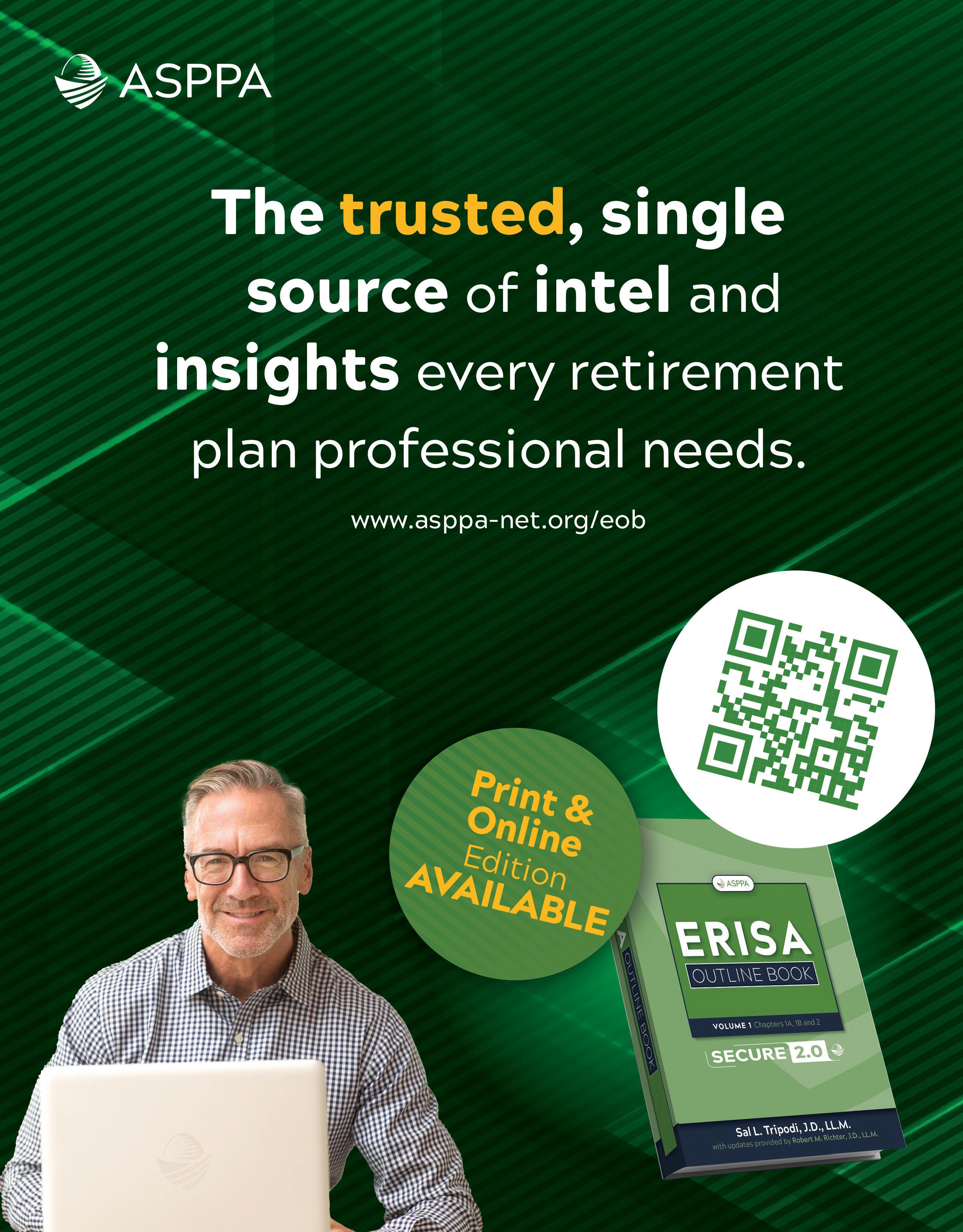

ON THE RECORD(KEEPERS): MAKING PAYROLL CONNECTIONS
Streamlining payroll integration isn’t just about numbers—it’s about bridging gaps, reducing errors, and keeping your recordkeeping in sync. By Katie Boyer-Maloy
The term “API” has become a buzzword over the last 5 to 10 years in the retirement plan space . Application Programming Interface (API) means very little to most, but its intended purpose has been on the radar of our industry—and many others— for a long time: to connect systems seamlessly, without the need for manual human data entry. In recent
years, several data aggregators have emerged as players in the space, bringing some of these sought-after solutions to fruition, one of the most groundbreaking being payroll integration.
When it comes to data management, we often hear the term “source of truth.” Unfortunately, this term doesn’t have a universal definition. For some, it’s the payroll
file; for others, it might be a Customer Relationship Management (CRM) system or a sign-off on the year-end census data submission. Ultimately, though, it comes down to the data provided by the plan sponsor, regardless of how it is received.
When that data transmission comes directly from the payroll provider, it eliminates not only the time required to download and
“PROVIDING FEEDBACK TO PAYROLL PROVIDERS IS ESSENTIAL FOR CONTINUED INNOVATION AND SUCCESS IN DATA CONNECTIVITY. BEING A TRUSTED PARTNER ENSURES YOUR VOICE IS HEARD AND CONSIDERED WHEN DEVELOPING FUTURE CAPABILITIES.”
send the data—but also the need to remember to do it. Additionally, it reduces the risk of errors introduced when reproducing the data set, as well as some liability associated with the movement of sensitive data.
Any data integration between different systems comes with challenges that need to be addressed. There’s also a strong possibility that the integration won’t cover everything needed to complete the work. However, even partial integration that eases the workload on your team or provides a head start can be a game changer.
So, what challenges should you be aware of that may arise for your team or the recordkeeping platforms you use? Let’s dive in.
1. DATA NORMALIZATION AND MATCHING FIELDS
No two TPA firms are identical, nor are the systems they use or the values those systems assign to track the same pieces of information. A prime example is the term “compensation.” Years ago, during my workflow software days, I pulled a report after noticing numerous ways people tracked compensation. I stopped counting at 100 distinct values. This didn’t include multiple fields for compensation with or without bonuses included— distinctions that might not be easily identifiable without extensive knowledge of a specific plan sponsor’s setup.
To avoid issues with mismatched data, a thorough onboarding
process is essential. While much of the process will be similar across recordkeeping partners, the nuances matter. Ensuring these details are documented and reviewed each time a new integration is built is critical to the success of the connectivity.
2. UNDERSTAND OPTIONS UPFRONT
No one enjoys completing the same task twice because they didn’t know what was possible. Knowing the capabilities of a system upfront is particularly helpful when discussing fees with plan sponsors to avoid surprises down the road. It’s much easier to cover capabilities and options during onboarding when all parties are focused on setting the plan up for success.
Make sure to discuss payroll integration early in the process. Depending on their current payroll procedures and systems, integration may not even be an option. If the discussion happens upfront, it opens the door for payroll system changes that could simplify processes. While clients are already in the mindset of making changes, this is a great time to introduce additional opportunities to make their lives easier and more efficient.
It’s also important to understand the difference between 180 and 360 connections. Different payroll providers offer varying levels of integration, and communicating these distinctions to your partners is crucial. Overpromising and underdelivering on expected
capabilities can damage new business relationships and trust.
3. BE AN ACTIVE PARTNER TO PAYROLL INTEGRATION PROVIDERS
Integration capabilities are still relatively new, particularly those tailored to the retirement industry. Providing feedback to payroll providers is essential for continued innovation and success in data connectivity. Being a trusted partner ensures your voice is heard and considered when developing future capabilities.
As with any technology—whether new to you or new to the industry— it’s important to thoroughly vet your options and understand their capabilities and limitations. Take the time to review procedures and stay up to date on changes and updates. Scheduling routine calls with the sales and onboarding teams for payroll integration providers can keep you informed about trends and upcoming enhancements. Building and maintaining strong relationships with these providers is invaluable.
Data has always been, and remains, king. As our industry continues to evolve technologically, we’re likely to see even more data integration capabilities surface. While payroll integration will likely expand further, the functionality available today is already a significant step forward. Take the time to educate yourself on these capabilities and incorporate the timesaving functionality into your toolbox for your team, clients, and external partners. PC

BRIDGING THE WEALTH GAP
How HBCU partnerships are creating pathways for black financial professionals. By Joey Santos-Jones
In the United States, the racial wealth gap remains a persistent issue, with Black and Hispanic households facing significant barriers to financial stability. As recently as 2019, nearly 14% of Black households and over 12% of Hispanic households lacked access to basic financial services such as checking and savings accounts—compared to only 2.5% of white households.
Many Black and Hispanic individuals cite distrust of financial institutions as a reason for staying outside mainstream banking, rooted in historical experiences of discriminatory lending and exclusionary policies.
For financial firms, this trust gap presents both a challenge and an opportunity to reimagine how they engage with Black and Hispanic communities and offer tools for financial empowerment. Through the creation of intentional partnerships and programs, some organizations are starting to make progress.
One recent effort focused on closing the wealth gap involves the American Retirement Association (ARA) and Financial Alliance for Racial Equity (FARE), which both partnered with historically Black colleges and universities (HBCUs) to support aspiring financial professionals through education and mentorship. This partnership aims to
help HBCU students develop skills and confidence in not only financial services but also retirement planning. By expanding access to ARA’s Introduction to Retirement Plans (IRP) and Retirement Plan Fundamentals (RPF) certification programs, the initiative not only enhances students’ knowledge of retirement planning but also provides them with a valuable credential that adds credibility to their resumes. The significance of this partnership is evident in the student feedback from the first HBCU cohort at WinstonSalem State University (WSSU). Tajah Paulk, a finance student, described the IRP certification as both informative and accessible.

Samuel Elliot, another WSSU student, echoed similar sentiments, noting that the course’s structure made complex topics easy to understand.

For student Brianna Wall, the IRP certification provided a comprehensive foundation in employer-sponsored retirement plans, helping her gain confidence in discussing key financial concepts.

IT WAS SET-UP IN A WAY THAT NOT ONLY ALLOWED FOR ENTERTAINMENT BUT ALSO FOR EDUCATIONAL PURPOSES. EACH SECTION WAS DESIGNED TO FULLY COMPREHEND THE QUESTIONS BEING ASKED AND THE TOPICS BEING DISCUSSED. I BELIEVE THIS IS A COURSE THAT SHOULD BE OFFERED MANDATORY FOR ALL FINANCIAL MAJOR STUDENTS,”
— TAJAH PAULK
“THE ARA - INTRO TO RETIREMENT PLANS COURSE WAS A FANTASTIC INTRODUCTION TO RETIREMENT PLANNING! I FOUND THE COURSE TO BE WELL-STRUCTURED AND VERY STRAIGHTFORWARD, COVERING ALL THE BASICS IN A WAY THAT WAS EASY TO FOLLOW. THE CONCISE FORMAT MADE IT EASY TO GRASP THE ESSENTIALS WITHOUT BEING OVERWHELMING,”
—SAMUEL ELLIOT
“THIS TRAINING HAS EMPOWERED ME WITH FOUNDATIONAL AND ADVANCED KNOWLEDGE OF RETIREMENT PLANS, EQUIPPING ME WITH THE CONFIDENCE AND TECHNICAL SKILLS TO PROVIDE WELL-ROUNDED SUPPORT TO CLIENTS. THE EXPERIENCE DEEPENED MY APPRECIATION FOR THE INTRICACIES OF RETIREMENT PLANNING AND MADE ME FEEL MORE PREPARED,”
—BRIANNA
WALL

Dr. Terrance Martin, an Associate Professor of Financial Planning at WSSU, has observed a tangible shift in his students since implementing the IRP certification.
Dr. Martin’s focus on bridging theoretical knowledge with practical application has helped students see the value of financial planning as a career path and as a means of uplifting their communities.
EXPANDING ACCESS: A STRATEGIC PARTNERSHIP ACROSS HBCUS
The success of the IRP certification at WSSU has led ARA and FARE to expand the program to five additional HBCUs: Hampton University, Howard University, Virginia State University, Virginia Union University, and Delaware State University.
With a long-term goal of reaching more students across HBCUs, FARE hopes to cultivate a new generation of Black financial advisors who are equipped to help their communities build wealth and navigate financial systems that have historically been exclusionary.
“We’re not just looking to provide internship opportunities; we want to ensure our students are continually developing in this space,” said Nicole Ridley, Head of Operations at FARE.
According to recent research conducted by FARE, nearly 90% of Black students recognize unique challenges for Black advisors in the financial sector, with the most common barriers being a lack of
“THIS CERTIFICATE PROGRAM HAS ALLOWED ME TO INTEGRATE PRACTICAL, REAL-WORLD INSIGHTS INTO THE CLASSROOM. FOR THE STUDENTS, IT’S BEEN EMPOWERING—ADDING A TANGIBLE CREDENTIAL TO THEIR RESUMES WHILE THEY’RE STILL IN SCHOOL. MANY HAVE EXPRESSED INCREASED CONFIDENCE IN UNDERSTANDING RETIREMENT PLANNING AND EVEN A NEW INTEREST IN PURSUING IT AS A CAREER,”
—DR. TERRANCE MARTIN
mentorship opportunities (40%) and consumer discrimination (33%). However, a strong motivator for students entering the field is the capacity to help others—a sentiment cited by 84% of respondents as a key influence in choosing their major. This commitment to giving back aligns with the vision FARE and ARA share for fostering diverse talent within financial services.
ADDRESSING THE TRUST GAP
Establishing trust is critical for financial institutions seeking to expand their reach in Black communities. Erika Goodwin, Director of Advocacy Engagement at ARA, noted, “The lack of Black representation in financial services not only affects those wanting to enter the field but also impacts clients who prefer advisors who share similar life experiences.”
Dr. Martin has seen firsthand how advisors from diverse backgrounds can resonate with clients.
“In Black and Hispanic households, family and friends often play a significant role in financial decisions,” he said. “Trust is more easily established when there’s shared understanding and experience, which can lead to greater long-term financial engagement.”
For financial institutions to bridge the trust gap, actionable strategies can
include strengthening partnerships with minority depository institutions, increasing Black representation across all organizational levels, and promoting transparency in their equity programs. Per FARE’s recent recommendations, institutions should actively provide mentorship and sponsorship for Black professionals, create networking opportunities, and collect data on program outcomes to continually improve their efforts. These steps are not only vital to fostering equity but also essential to the sustainability of financial services in an increasingly diverse America.
THE ROLE OF CERTIFICATION IN BUILDING CAREERS
In recent years, smaller colleges and universities have found value in pairing traditional degrees with certifications, a trend Dr. Martin sees as essential in preparing students for a competitive workforce. Certifications like IRP and RPF equip students with industrystandard skills, often giving them a leg up over peers from larger institutions.
Morgan Williams, Program Manager at FARE, reflected on this strategic approach, emphasizing the importance of “mentoring and refining talent that, with just a bit of guidance, could be transformative for the industry.” Dr. Martin added, “Certifications provide a way for students to demonstrate their

commitment and capability in financial planning, making them more attractive to potential employers and more effective in their communities.”
EXPANDING ACCESS AND OPPORTUNITIES
In addition to increasing access to ARA certifications, FARE’s mission includes fostering a supportive network through intentional recruitment, training, and advocacy. By prioritizing long-term relationships with educational institutions and creating intentional opportunities for Black financial professionals to advance, FARE aims to strengthen diversity in the industry.
“We are moving the needle through these education programs and reaching young people that may never have known about the careers available in the retirement industry,” Patricia Wenzel, Chair of the ARA Diversity Committee, added.
At the upcoming 2025 NAPA Summit session, “Bridging the Gap: Attracting Talent from Outside the Financial Services Industry,” Dr. Martin will join other panelists to discuss these strategies and explore how financial firms can tap into new, diverse talent pools.
As more organizations seek to create sustainable, inclusive talent pipelines, programs like the IRP certification from ARA demonstrate a model for success. By investing in Black students’ futures, ARA and FARE are helping to bridge the racial wealth gap and build a more representative financial services industry.
“Being able to be a part of this collaboration as Vice-chair of the ARA Diversity Committee is a full-circle moment for me. I had an uncle in the business, and I knew as a child that I wanted to help others get to a solid financial position as my life’s work.
Now I get to help inspire the next generation to do the same thing,” Jay Washington said.
As Dr. Martin observed, “Everyone talks about wanting to do more for diversity and inclusion; now is the time for action. When we actively invest in these communities, we’re not just creating opportunities—we’re creating a more equitable future for everyone.”
“In order to ensure diverse advisors and other professionals excel in our business, it’s important we cultivate talent and provide mentoring opportunities to help everyone succeed,” Washington added, referencing the Nourish Our Wealth (NOW) program. PC
If you are interested in being a mentor or mentee, please go to https:// www.usaretirement.org/get-involved/ special-initiatives/ara-now/

TRAVEL JOURNAL: “THE JOURNEY TO” ASPPA ANNUAL CONFERENCE 2024
There were lot of new sights and sounds from the ASPPA Annual roadtrip—biggest of all, was the changes for TPA Growth Summit. By Krisy Dempewolf, JJ McKinney & Julie Altig
TPA Growth Summit (TPAG) took on a new look and feel by launching into the Florida atmosphere bright and early on Sunday morning. Our campers were up for a 7:30 breakfast, fueling for an 8:15 countdown to ride the sales machine with Chad Johansen and Russ Hooker. Next we learned to lean into leading with vision and purpose, captained by Jill Dennis and Eric Droblyen, then anchored the day by future-proofing our businesses and planning for the long haul ahead with Karen Smith and Richard Phillips. TPAG was the ultimate tailgate for ASPPA Annual this year as
opposed to the piggyback ride throughout the conference in previous years competing for attention from the enticements of the SECURE Acts and related guidance. A combination of presentation and roundtable discussion, attendees had a chance to put concepts into their own words, applicable to their businesses, as part of each 100 minute session. Our gracious sponsors facilitated the roundtable discussions.
The TPAG crew merged with the rest of the attendees at the annual business meeting, then capped off the day breaking bread with sponsors.
DAY 1: SETTING OFF ON A NEW ADVENTURE
This year, the annual ASPPA Annual Conference took us on an exciting new journey—literally. For the first time, we left the familiar shores of National Harbor, MD, and embarked on an adventure to Orlando, FL. The theme, “The Journey To,” couldn’t have been more fitting, as retirement plan professionals from all corners of the industry—actuaries, attorneys, recordkeepers, and TPAs—gathered to explore the evolving landscape of retirement consulting.
As I arrived at the conference venue, the energy was palpable.
There’s something about Florida in October—the warmth of the sun, the buzz of excited conversations, and the thrill of being in a brandnew location. After checking in and grabbing my name badge, I was ready to dive into the road map of knowledge awaiting us.
My first stop? The First-Time Attendee Brunch. Though not my first ASPPA Annual rodeo, I always love attending these events to meet new travelers. The room was filled with fresh faces, eager to hit the road and start their professional journeys. The sense of community was strong— veterans of the conference mingled with newcomers, offering advice, swapping stories, and sparking connections that would carry us through the next few days.
After brunch, it was time for the pre-conference technical sessions. These sessions felt like an early detour off the main highway—focused, deep dives into specialized topics that set the stage for the journey ahead. I kicked off with Making a Regulation - How Guidance is Born, a fascinating look behind the scenes at how rules and regulations are crafted. Understanding the regulatory process is like having a map to navigate the ever-evolving landscape of compliance. Next, I explored the twists and turns of Qualified Plan Terminations –Optimizing the best outcome at the end of a relationship—not the easiest road to travel, but critical for any plan professional.
The afternoon brought us together for the general session, where the ARA and ASPPA business meetings took center stage. This was followed by a much-anticipated 2024 Washington Update, our compass for understanding the current political climate and upcoming changes that will impact the retirement industry. The American Retirement Association team delivered insights that helped us navigate the tricky terrain of ongoing legislation.
As the day wound down, I found myself at the President’s Reception in the exhibit hall. This event was the perfect opportunity to reconnect with colleagues, meet new vendors, and explore innovative tools and services that could help steer my business in new directions. The exhibit hall was a flurry of activity—booths lined up like roadside attractions, each offering something new to discover. I left the reception with a full heart and a mind buzzing with possibilities for the days to come.
DAY 2: NAVIGATING NEW HORIZONS
Tuesday morning arrived, and with it, a sense of anticipation. I fueled up with a sponsor breakfast in the exhibit hall—an excellent pit stop to grab coffee, network with other professionals, and check out more exhibitors before the day’s journey into technical sessions began.
I started my morning with SECURE 2.0: Amending Plan
Documents, a session that dove deep into the complexities of ensuring compliance with this sweeping legislation. The SECURE Act has changed the landscape for plan sponsors, and keeping up with its provisions is essential to avoiding pitfalls down the road. The day’s first general session brought us Bob Kaplan and Robert Richter, two guiding lights in the retirement industry. Their Current Events with Bob and Robert was a comprehensive tour through the latest guidance from the IRS, Department of Labor, and Treasury. We rode through updates on everything from tax credits to distribution rules, with Bob and Robert serving as our GPS—keeping us on track through it all.
Next, I attended Enhancing Collaboration: Partnering with Advisors to Serve Our Clients. Here, we discussed best practices for working closely with financial advisors, a key relationship in guiding
clients through the complex highways of retirement plans. As someone who values teamwork, this session hit home, offering tips on how to stay aligned with advisors for the benefit of all parties involved.
After a quick break for lunch and some impromptu networking in the hallways, I jumped into Navigating the Waters: Practical Applications and Plan Design for Long-Term PartTime Employee Regulations. With SECURE 2.0 making changes to parttime eligibility for 401(k) plans, this session was like a road sign pointing toward future compliance challenges. It offered practical solutions for implementing these new rules, something I know will be crucial for many of my clients.
Later, I joined the Decoding SECURE 2.0: M&A Considerations session—a fascinating exploration of how the legislation is reshaping the landscape for businesses involved in corporate transactions. Mergers and acquisitions are already a complex journey, and SECURE 2.0 adds new layers of considerations for plan sponsors. It’s like trying to navigate a new city without a map, but sessions like this one are exactly the kind of navigational tool we need.
The second general session of the day was a lively change of pace— Nevin Adams and Fred Reish hosted a live podcast, Nevin & Fred Live!, from the main stage. The interactive format and candid discussions on current issues were a breath of fresh air, keeping us engaged and entertained while diving deep into industry challenges.
DAY 3: TWISTS, TURNS, AND ETHICS STREET
Day three kicked off with more sponsor breakfast sessions in the exhibit hall, a chance to recharge before the day’s full itinerary of technical sessions and general meetings. First up on my agenda was Are We Related? Minimum Coverage
“THE DISCUSSIONS AROUND NONDISCRIMINATION FELT LIKE NAVIGATING A MOUNTAIN PASS—STEEP, CHALLENGING, BUT ULTIMATELY REWARDING ONCE YOU REACH THE SUMMIT.”
Case Studies, an important topic since being part of a related employer group affects how a plan’s minimum coverage testing is performed. The case studies provided an opportunity to apply the concepts to real world situations such as an employer becoming part of or leaving a related employer group during the plan year.
The morning general session did not disappoint. The 2024 Government Update featured Kyle Brown, Deputy Benefits Tax Counsel, and Jeffrey Turner, Acting Director, Office of Regulations and Interpretations, EBSA. This session felt like getting real-time updates from the control center as they shared the latest developments in policy and regulation. It was followed by a spirited discussion with Payson R. Peabody, Retirement Tax Counsel, Chairman Jason Smith, U.S. House Committee on Ways & Means and The Honorable Preston Rutledge, former Assistant Secretary, U.S. Department of Labor, offering insight into legislative priorities in Congress that will shape the industry moving forward.
I ventured further into the landscape of SECURE 2.0 with SECURE 2.0 Decoded: Preparing for the Automatic Enrollment Revolution in Retirement Plans, exploring which plans will be subject to the automatic enrollment mandate starting in 2025, and, just as crucially, identifying the plans that will remain outside its reach.
After lunch in the exhibit hall, I joined Navigating Nondiscrimination Testing in the Wake of SECURE 2.0. This session tackled some of the more nuanced changes to testing requirements, helping to clear up confusion and providing practical steps for compliance. The discussions around nondiscrimination felt like navigating a mountain pass—steep, challenging, but ultimately rewarding once you reach the summit.
Another highlight of the day was Will the real 3(16) please stand up This role is becoming increasingly important in retirement plans, and understanding its responsibilities is critical. The session was a great reminder that, as professionals, we’re often the trusted guides for our clients, responsible for helping them stay on the right path.
The afternoon general session was a showstopper. We took a terrifying trip down the dark and winding Ethics Street in a Nightmare on Ethics Street: A Horrifying Journey Through the Labyrinth of Qualified Plan Administration. This session was both engaging and sobering, reminding us that while the road ahead is full of opportunities, it’s also lined with ethical traps. The session provided practical examples of realworld ethical dilemmas and how to navigate them with integrity. It’s the kind of session that reminds you to always keep your moral compass close at hand, no matter how tempting the shortcuts may seem.
The evening brought a muchneeded break in the form of the ASPPA @ Night event. Themed decor, a live band, and yard games made for a festive atmosphere. I joined colleagues at the photo booth, capturing memories of the laughter and camaraderie we’d shared. After days of intense learning, this was the perfect pit stop to relax, recharge, and enjoy the company of fellow travelers.
DAY 4: CROSSING THE FINISH LINE
The final day arrived, and while the conference was winding down, the learning wasn’t over yet. After another quick breakfast, I headed into my last two rounds of technical sessions. One of the highlights was Beyond Protected Benefits: Consulting Opportunities in Mergers
and Acquisitions, which delved into the complexities of handling retirement plans in merger and acquisition transactions. It’s a journey filled with legal and administrative hurdles, and this session provided a clear map of how to assist plan sponsors in navigating those challenges.
My last technical session was The Future Is Here - Student Debt Match & PLESAs. With so many new provisions available to plan sponsors, this session broke down the pros and cons of implementing optional features like student loan matching and penalty-free withdrawals. It was a great way to close out the technical portion of the conference, as it provided concrete takeaways I could bring back to my clients.
The final general session of the conference was the ever-popular Ask the Experts panel. This session is always a highlight—a chance to hear candid, practical answers from the industry’s top minds. Attendees posed questions on everything from compliance challenges to forwardlooking strategies. It felt like pulling over at a scenic overlook, where we could all take in the wide view of where we’d been and what lay ahead.
As I packed up my notes and prepared to head back to the airport, I reflected on the journey we’d taken together. The ASPPA Annual Conference always feels like more than just an event—it’s a road trip through the ever-changing landscape of retirement planning. This year, with a new location, fresh topics, and a wealth of learning, it was a journey well worth taking.
With a full notebook and even fuller heart, I left Orlando knowing that the road ahead may be uncertain, but I’m ready for the drive. “The Journey To” continues—onward! PC

TRUST AND TRIUMPH: CULTIVATING LOYALTY WITH KEY PARTNERS – PART TWO
Why do your clients choose your firm and continue their partnership? Why do financial advisors and wholesalers trust you to serve their clients? Is it just about the basics—completing forms and running tests—or is it about the unique value and relationship you bring?
By Shannon Edwards, Emily Halbach-Sharp & Katie Boyer-Maloy
In part one, we covered the “why” behind what makes our partners choose to work with us. We highlighted the key components that make us stand out, whether it’s service, price point, communication, or a combination of all those factors. We also covered the importance of building relationships and how human nature and comfort play into decision-making. We closed part one with a deep dive into three key components of a strong partnership: trust, dependability, and becoming the go-to partner.
Now that we’ve covered the qualities of a strong partnership, part two will focus on the “how-to” piece. We know what needs to be true to build the relationship, so let’s explore ways to retain and strengthen partnerships to keep centers of influence for the long term. Here are a few tips from three women who have built their careers around creating and cultivating next-level relationships:
1. SCHEDULE CONSISTENT CHECK-INS
As with any routine, consistency is key. We’ve found that regardless of how good a relationship is—or even the intention to stay on top of it—life can get in the way, and without scheduling time to check in, it just doesn’t happen.
Even if the check-in is just a calendar reminder for you internally, put it on the calendar and commit to the outreach.
Remember, you don’t need to have something life-changing to say. It’s okay to simply check in and let them know they crossed your mind, share something meaningful you think they’d benefit from, or mention that their name came up in a great conversation. For a top relationship, aim to have some sort of touchpoint every 30 to 60 days. It doesn’t have to be an in-person dinner meeting to be meaningful; just ensure that when an opportunity presents itself that aligns with your services and expertise, your name is top of mind.
2. BE DIFFERENT
No two TPA firms are the same, nor are advisors or recordkeepers. However, baseline service offerings are often very similar. A good practice is to think about how your firm looks on paper compared to competitors. Then, consider how your advisor partners would advocate for you in a room—or if they would at all. If you aren’t sure, have the conversation and ensure your value proposition is clear.
This is where uniqueness helps you stand out to your partners. Maybe it’s a signature pink clothing accessory, being a passionate sports fan and alum of a local team, being known as a
closer in finals presentations with stats to prove it, or having the best holiday decorations in town. Partners should already know your team is skilled in plan administration, so confidence in your abilities should be a given. But what else makes you different? Why should you be their partner of choice? If you can’t answer those questions, make it a mission to do so—and soon. Then, share your value proposition with your top partners. They should know, and so should you.
3. OWN IT WHEN YOU MAKE A MISTAKE
Here’s a fun fact: No one is perfect. Mistakes will happen, and sometimes they’re ugly, frustrating, or embarrassing to admit. But guess what? Everyone makes mistakes. No one expects perfection. What no one likes, however, is being lied to, given the runaround, or stuck in a fingerpointing war. Another frustration is being blindsided by a client about an issue they weren’t informed about.
A good policy is to let key partners know about a problem within 24 to 48 hours. This allows you time to investigate and, ideally, have a solution in the works when you communicate. Even if you don’t, involving the partner early lets them weigh in with suggestions for the

best approach. Honesty is crucial— it allows you to get ahead of the situation before it escalates. Keep them updated on progress every step of the way. When they see you take charge to fix the issue, communicate thoroughly, and care for both them and the plan sponsor, their confidence in the partnership grows stronger.
4. SET AND RESPECT BOUNDARIES
Fair warning: This one is easier said than done, but it makes a huge difference in building mutual respect
and partnering with the right people. If something is a hard “no” for your firm, stand your ground—even if the asker is a great partner. A good partner won’t push you to go against your boundaries. If you let it slide “just this once,” the asks will keep coming, and the expectations will shift.
The same applies to setting expectations around response times and when it’s appropriate to contact you. If you accept calls at all hours, partners will expect you to be available anytime they need you.
Remember, no one’s time is more valuable than yours or your team’s. Set expectations early, make them known and acknowledged, and stick to them. Laying this groundwork will make the relationship more seamless and prevent future communication issues.
Being a good partner is about consistency, which looks different for everyone and should be tailored to fit you and your partners. These tips can help you create a rhythm that works and build loyalty with your centers of influence. PC
HOW TO LEVERAGE RECORDKEEPERS’ RESOURCES TO SAVE TIME AND MONEY WHILE BOOSTING YOUR TPA BUSINESS
Could recordkeepers’ marketing assets be the game-changer your TPA firm needs to thrive?
By Andrew Tirney
A WEALTH OF MARKETING ASSETS
As a third-party administrator (TPA), providing high-quality service and expertise to your clients is critical. Balancing those efforts with your time and budget for marketing can be challenging.
The retirement services industry is competitive, and standing out requires showcasing your value and expertise at every opportunity. One effective strategy is leveraging the marketing
assets offered by recordkeepers. Recordkeepers actively engage two key audiences: plan sponsors and financial advisors. They produce a variety of resources, including brochures, white papers, webinars, and websites, that explain their plans’ features and benefits and share industry trends and best practices. These materials not only educate plan sponsors and participants but also help market your TPA services, positioning
you as a trusted partner.
Some of the most useful resources include:
• Literature highlighting your value to financial advisors
• Educational presentations for advisors and sponsors
• Practice management resources for both you and advisors
Best of all, these resources are free and save you time and money creating content.
“YOUR TIME AND BUDGET ARE LIMITED, BUT YOUR RECORDKEEPING PARTNERS ARE EAGER TO SUPPORT YOU. LEVERAGE THE HIGH-QUALITY CONTENT THEY PRODUCE TO ENHANCE YOUR MARKETING EFFORTS.”
HOW TO FIND AND ACCESS RECORDKEEPERS’ RESOURCES
Start by identifying the resources you need. Recordkeepers provide access in several ways:
• Visit their websites and browse resource libraries or media centers. Some materials may require registration or login
• Subscribe to their newsletters or email lists to receive updates directly
• Follow their social media accounts for the latest posts and announcements
• Contact their sales or marketing teams to request materials or recommendations
• Attend webinars, seminars, or conferences hosted by recordkeepers and download or request resources afterward
When collaborating with recordkeeping partners, communicate any gaps between the resources available and the messages you want to convey. In some cases, they can work with their marketing teams to create custom content tailored to your needs.
SELECTING THE MOST RELEVANT RESOURCES
Once you’ve accessed the resources, choose those most relevant to your target audience. Consider these factors:
• Audience needs and goals: What challenges or opportunities do they face? Are there specific pieces
addressing issues like regulatory changes?
• Stage of the sales cycle: Are they exploring your services, ready to decide, or loyal customers? How can the material help move them to the next stage or maintain their loyalty?
• Format and tone: What type of media resonates most—reading, watching, or listening? Do they prefer short or detailed, factual or emotional content?
• Alignment with your value proposition: How does the material enhance your expertise and differentiation?
Evaluate the resources carefully and avoid outdated, inaccurate, or irrelevant content that could detract from your brand.
DELIVER AND FOLLOW UP TO GENERATE LEADS
Using recordkeepers’ materials effectively can build trust, demonstrate your expertise, and create opportunities for new business. Here’s how to maximize their impact:
• Supplement conversations with literature: During meetings, have relevant pieces on hand to support your message. Provide physical copies when appropriate.
• Host presentations with recordkeepers: Collaborate with recordkeepers’ sales teams to present practice management
sessions, leveraging their connections with advisors. Follow up with attendees to identify and pursue prospects.
• Promote client education sessions: Inform your clients about recordkeepers’ educational events. Empowered, informed clients are more confident and likely to recommend you.
• Take advantage of TPA training: Participate in training sessions offered by recordkeepers, from soft-skill development for account managers to sales strategies for partnering with advisors.
Establish a routine with recordkeeping partners to coordinate follow-ups and ensure clear communication about prospects. By working together, you can close deals and grow your business.
BOOSTING YOUR BUSINESS
Your time and budget are limited, but your recordkeeping partners are eager to support you. Leverage the high-quality content they produce to enhance your marketing efforts. Sharing these resources not only helps your clients but also strengthens your reputation as a valued partner.
Locate the materials, collaborate with sales teams, and generate new business efficiently. Save time, reduce marketing expenses, and boost revenue by taking full advantage of recordkeepers’ resources. PC
ELECTION RESULTS, TAX REFORM, AND KEY POLICY INITIATIVES
Election season is upon us, and several of ARA’s top policy priorities are picking up steam. By James Locke
With elections in the rearview mirror, there are only a few legislative days remaining in the 118th Congress. As the American Retirement Association (ARA) continues to navigate this “lame-duck” session, it will continue its advocacy efforts, pushing for policy reforms aimed at improving the employer-sponsored retirement system for both professionals and participants.
UNIFIED GOVERNMENT
Republicans had a big election day and managed to win both chambers of Congress and the White House. This means that we will see unified government as President-elect Trump begins staking out his top policy priorities.
In Congress, Republicans will likely pursue their top priorities early in 2025 through the budget “reconciliation” process, which allows the controlling party to pass legislation with a simple majority rather than needing 60 votes in the Senate. Incoming Senate Majority Leader John Thune has made it clear that he plans to leverage the reconciliation process within the first 30 days of the new Congress.
TAX REFORM
As the Tax Cuts and Jobs Act is set to expire at the end of 2025, members of Congress are beginning to explore potential changes to the tax code that could significantly affect America’s retirement system.
The tax treatment of retirement savings will be a key area of focus for lawmakers in the new Congress. Changes to retirement savings tax incentives have already been introduced in SECURE 2.0, and further discussions on reforms are expected in SECURE 3.0 and beyond. These proposals could involve expanding tax credits to encourage retirement plan participation, especially for low- and middle-income workers, as well as revising the tax treatment of Roth savings and workplace retirement plans.
On the other hand, some lawmakers may consider reducing tax incentives for retirement plans to fund other tax-related priorities. As a result, the ARA will dedicate much of the upcoming year to educating members of the tax-writing committees about the importance of maintaining the tax-advantaged status of retirement plans.
EXPANDING ACCESS TO COLLECTIVE INVESTMENT TRUSTS (CITS) FOR 403(B) PLANS
Empowering 403(b) plan sponsors to include CITs in their suite of investment options is ARA’s top priority for the remainder of the year. The ARA supports a proposal that would amend outdated securities law to allow 403(b) plan sponsors to leverage CITs in their investment lineups. The Retirement Fairness for Charities and Educational Institutions passed the House in March, and a Senate version was introduced by Senators Katie Britt (R-AL) and Raphael Warnock (D-GA) in August. For the remainder of the year, the ARA will continue to engage with Senate members and encourage the bill’s passage.
NEW TAX CREDIT FOR NONPROFITS
Another significant retirement policy initiative being advanced by ARA focuses on enhancing retirement plan accessibility for charities and nonprofits. Specifically, ARA is advocating for legislation that would create a new payroll tax credit that will incentivize nonprofit organizations to adopt retirement plans for their employees.
SECURE 2.0 included a robust retirement plan start up credit tied to income tax liability. This provision made it more affordable for small businesses across the country

to adopt retirement plans for their workers. Unfortunately, this provision does not help nonprofits because they generally do not have any income tax liability. Accordingly, ARA has been working with members of Congress to introduce legislation modeled after the SECURE 2.0 tax credit, but instead delivering the tax credit against the nonprofit’s payroll tax liabilities.
In August, Senators James Lankford (R-OK) and Catherine Cortez Masto (D-NV) introduced a bill that would create this essential payroll tax credit for nonprofits wishing to adopt a retirement plan for their workers. ARA is also working with members in the House to introduce a companion bill.
ROTH IRA ROLLOVERS
The ARA is also working to introduce legislation allowing the rollover of Roth IRA savings into workplace-based defined contribution plans. Under current law, employees can transfer pre-tax amounts during job changes, however Roth savings remain trapped in IRAs.
To address this, ARA worked with Rep. LaHood (R-IL) and Rep. Sanchez (D-CA) to introduce H.R. 6757 which will facilitate the seamless transfer of Roth savings into designated Roth buckets within 401(k) plans. ARA is pursuing a Senate companion bill to further support this initiative. PC
James Locke is the American Retirement Association’s Director of Federal Government Affairs.

